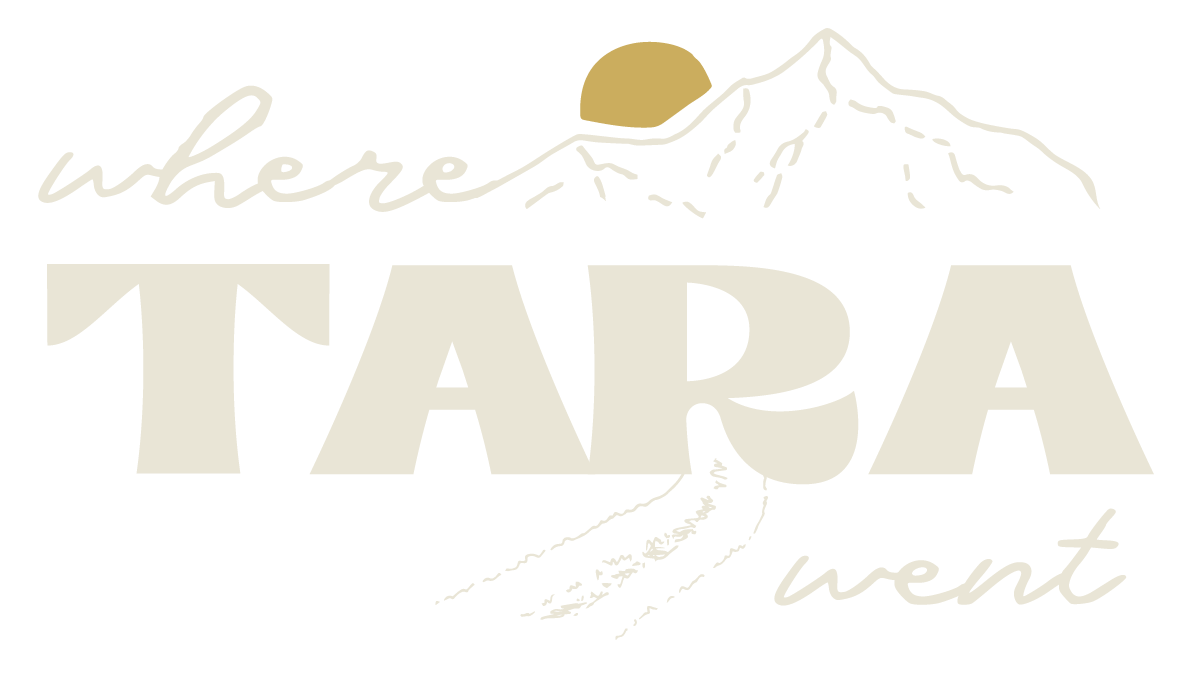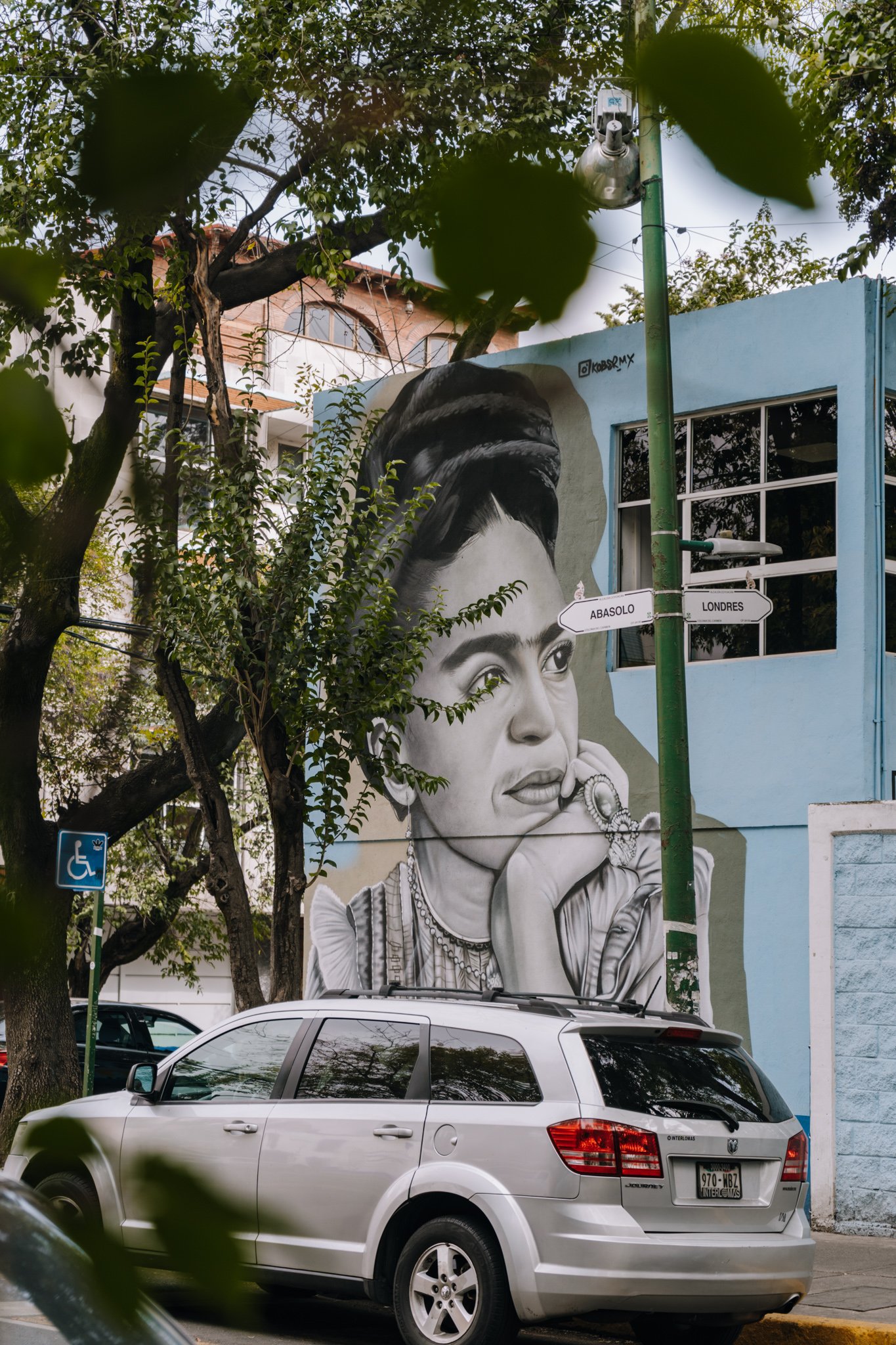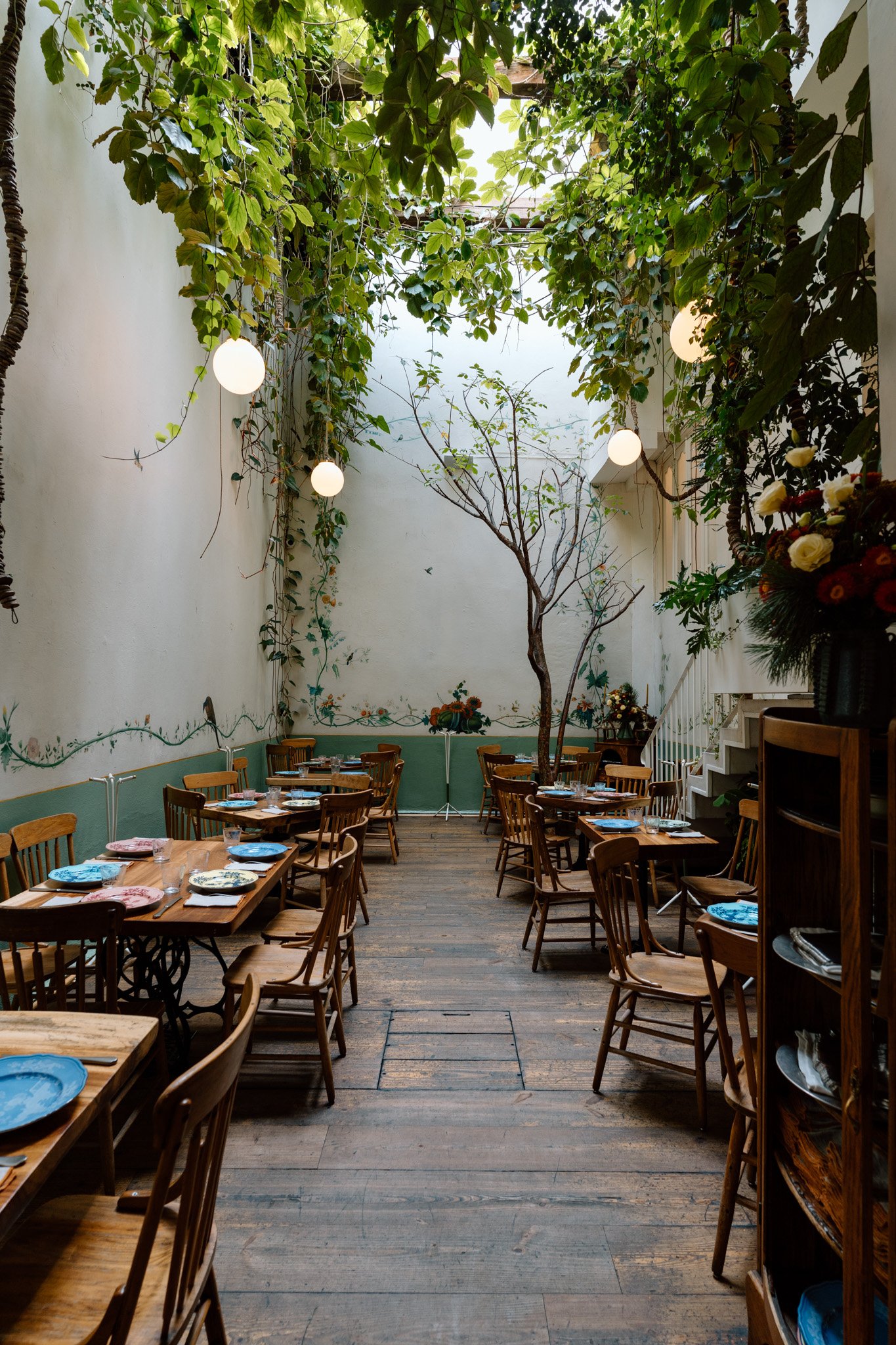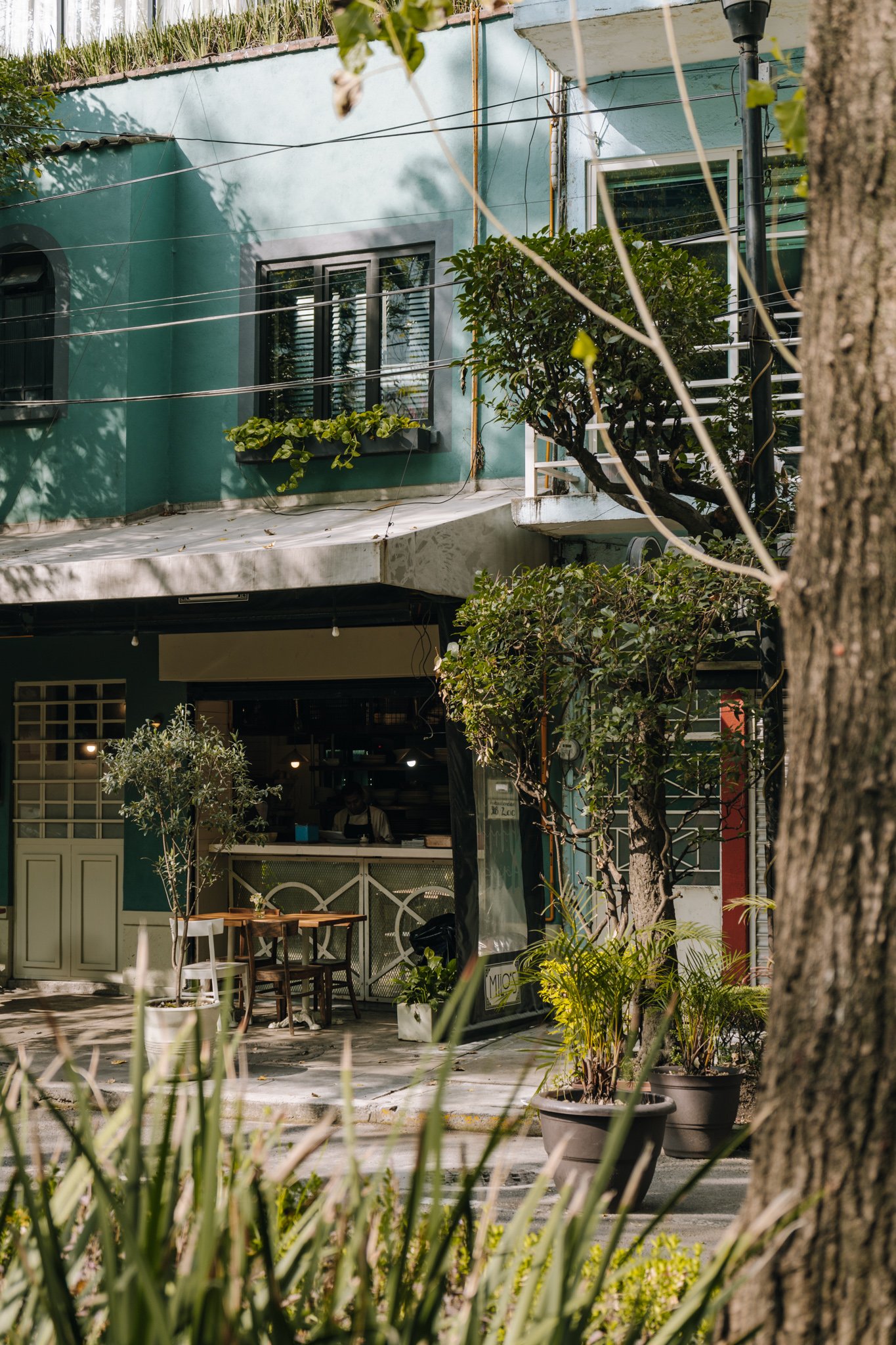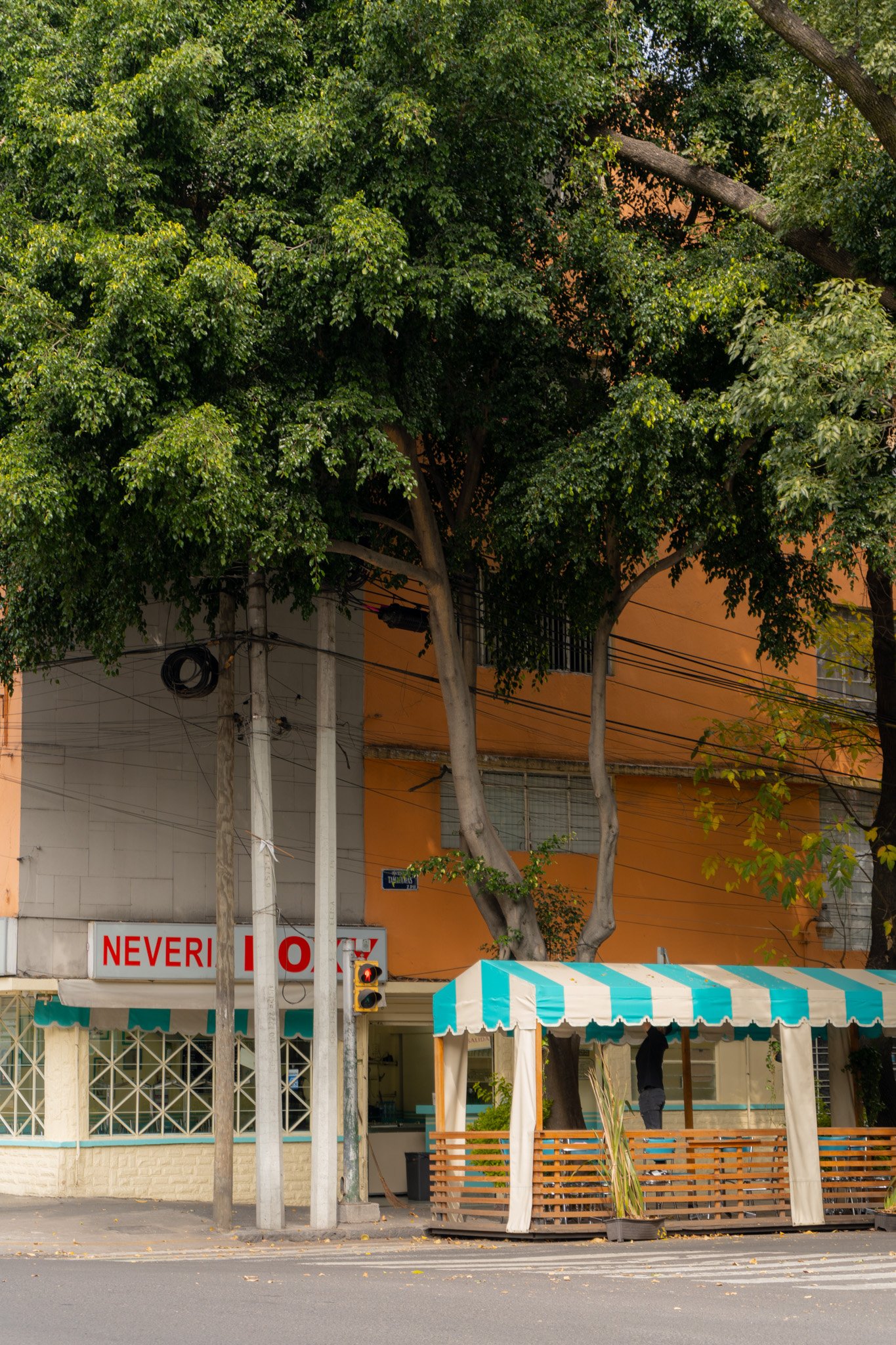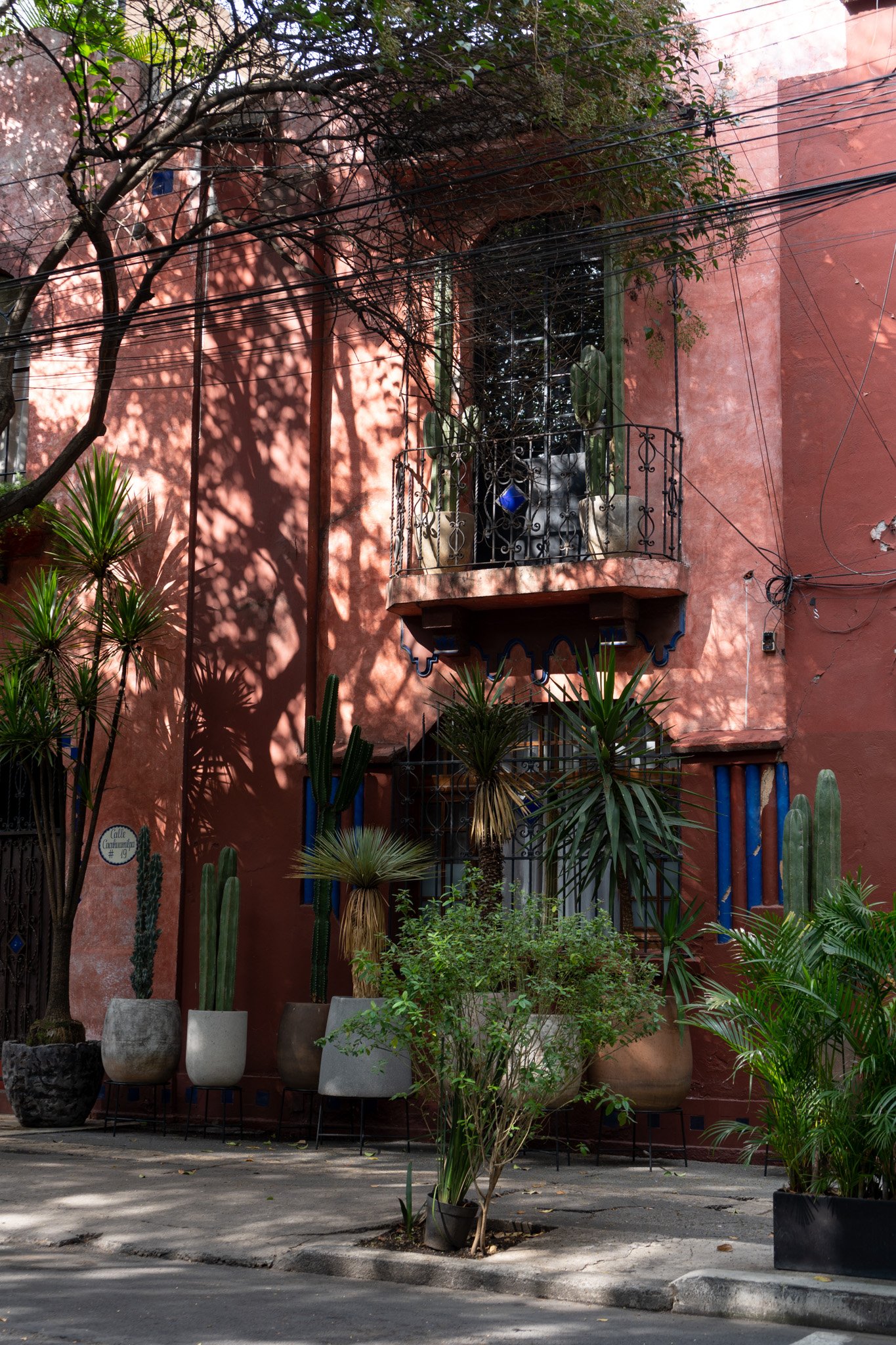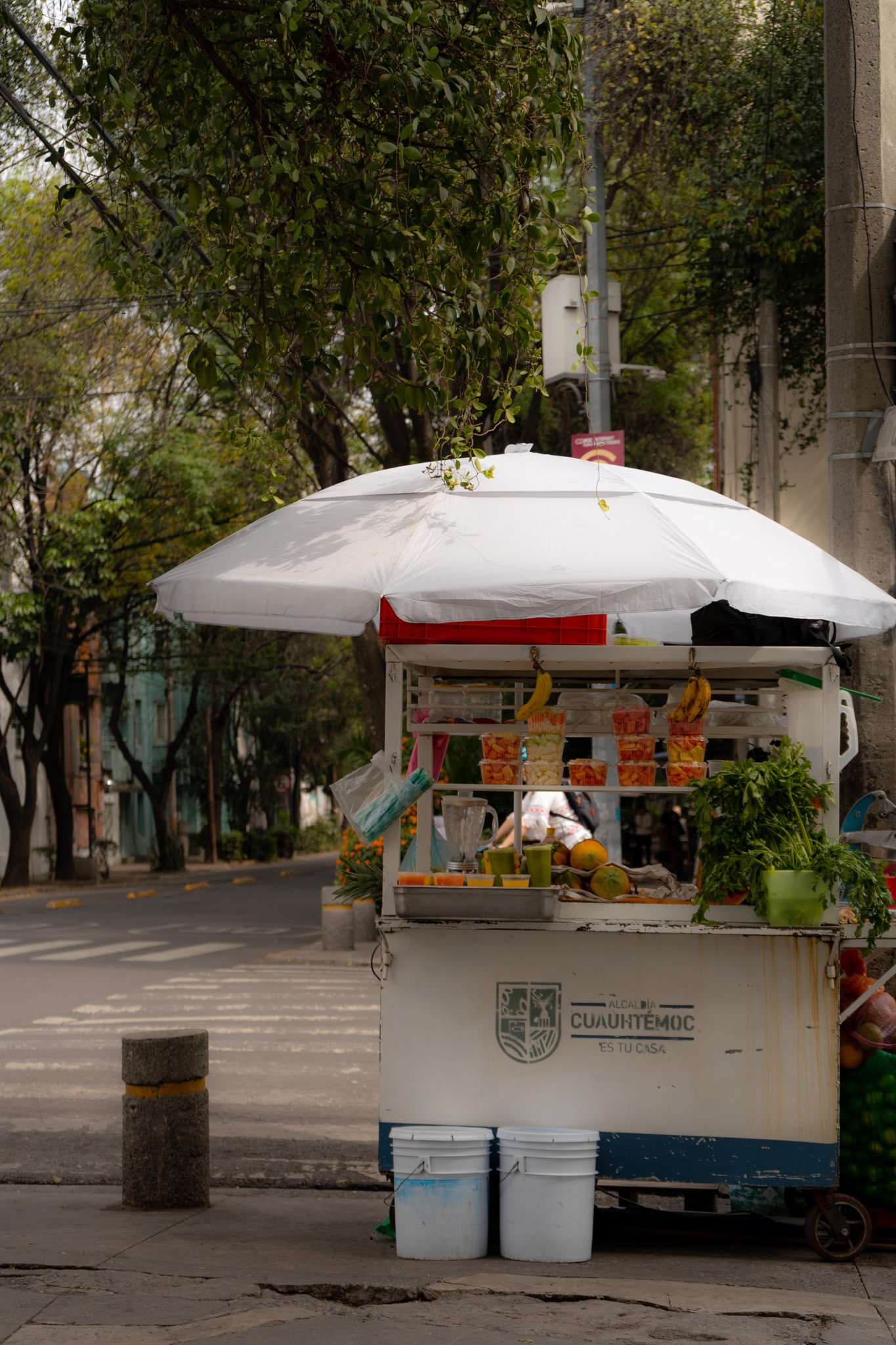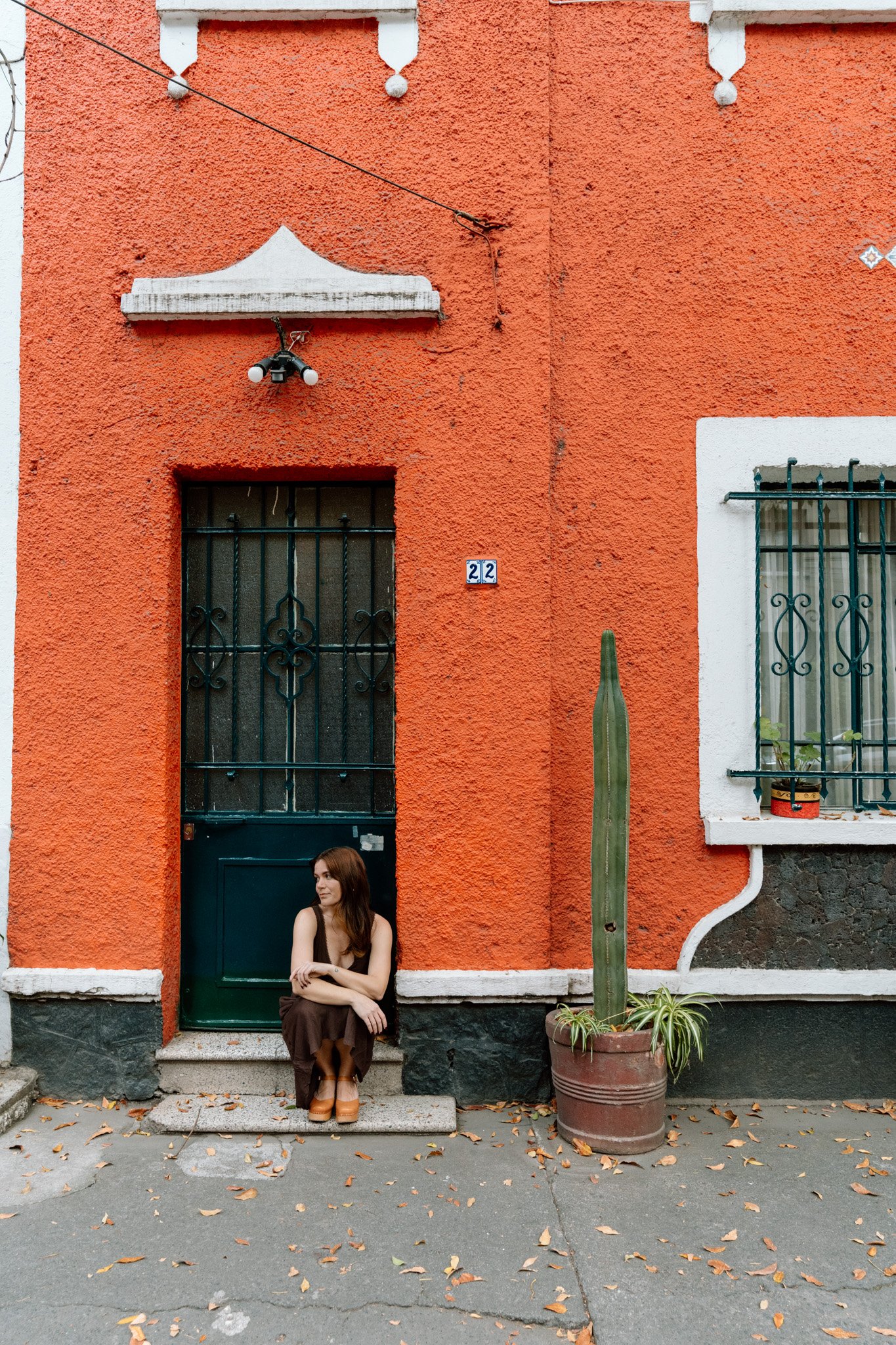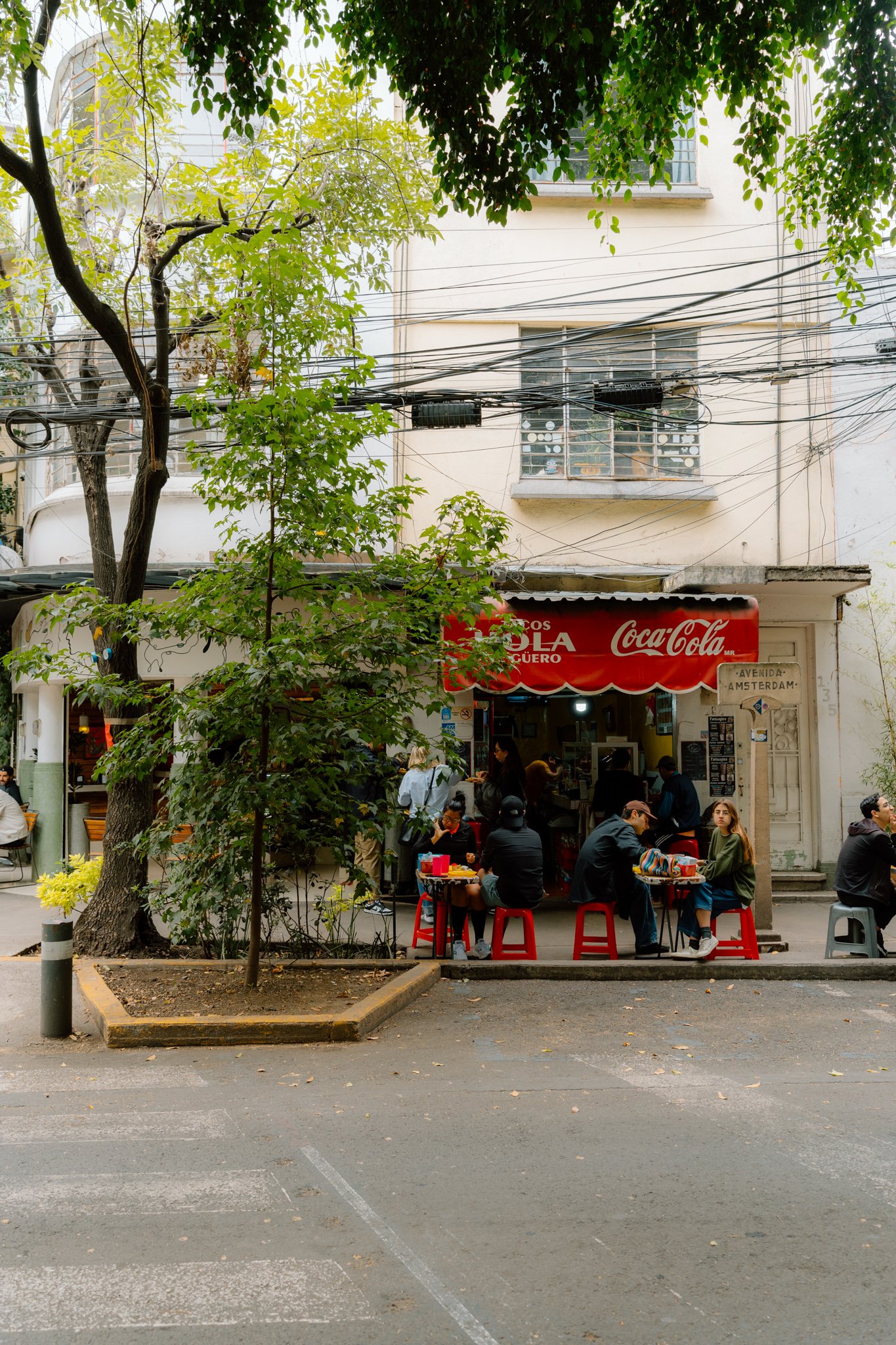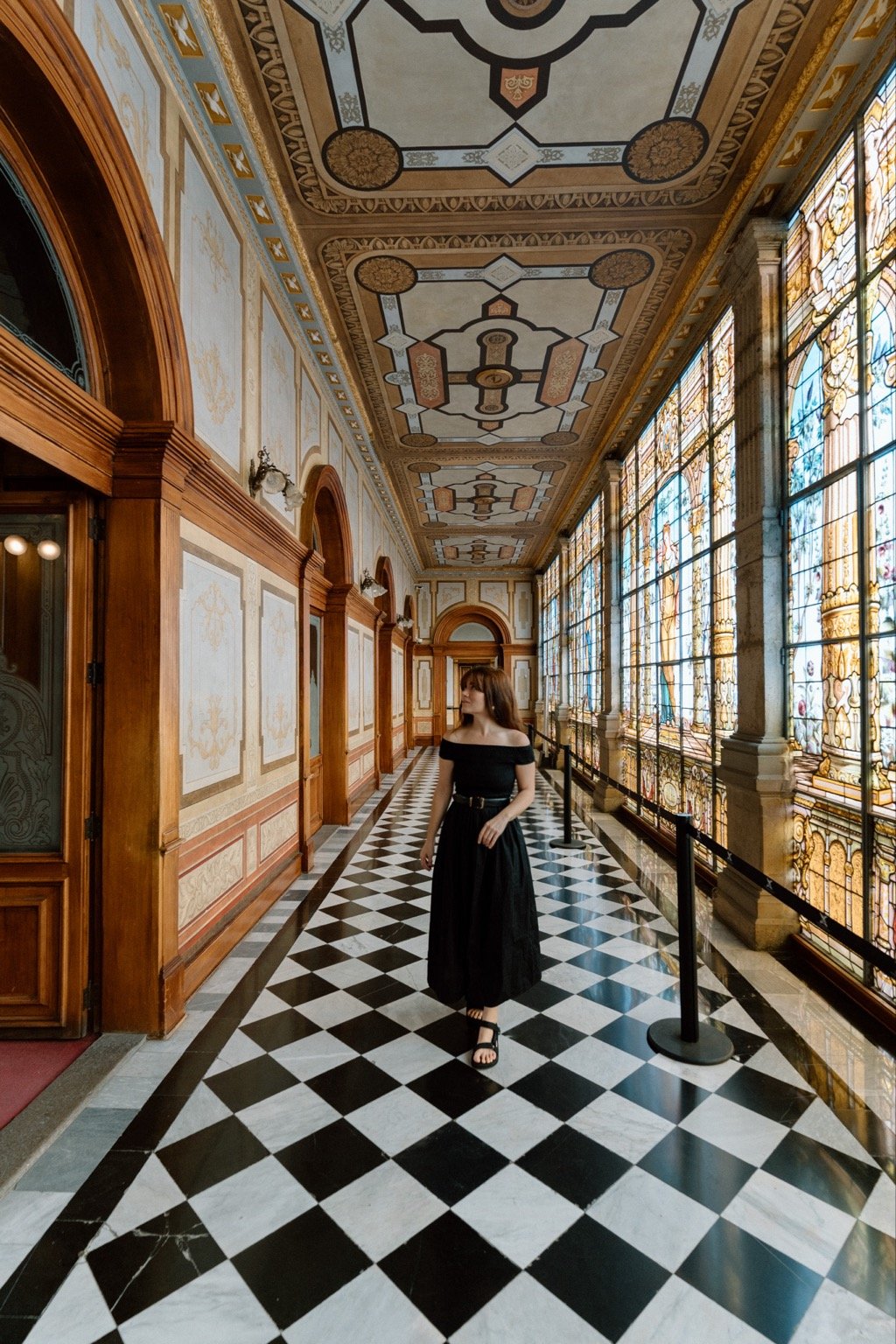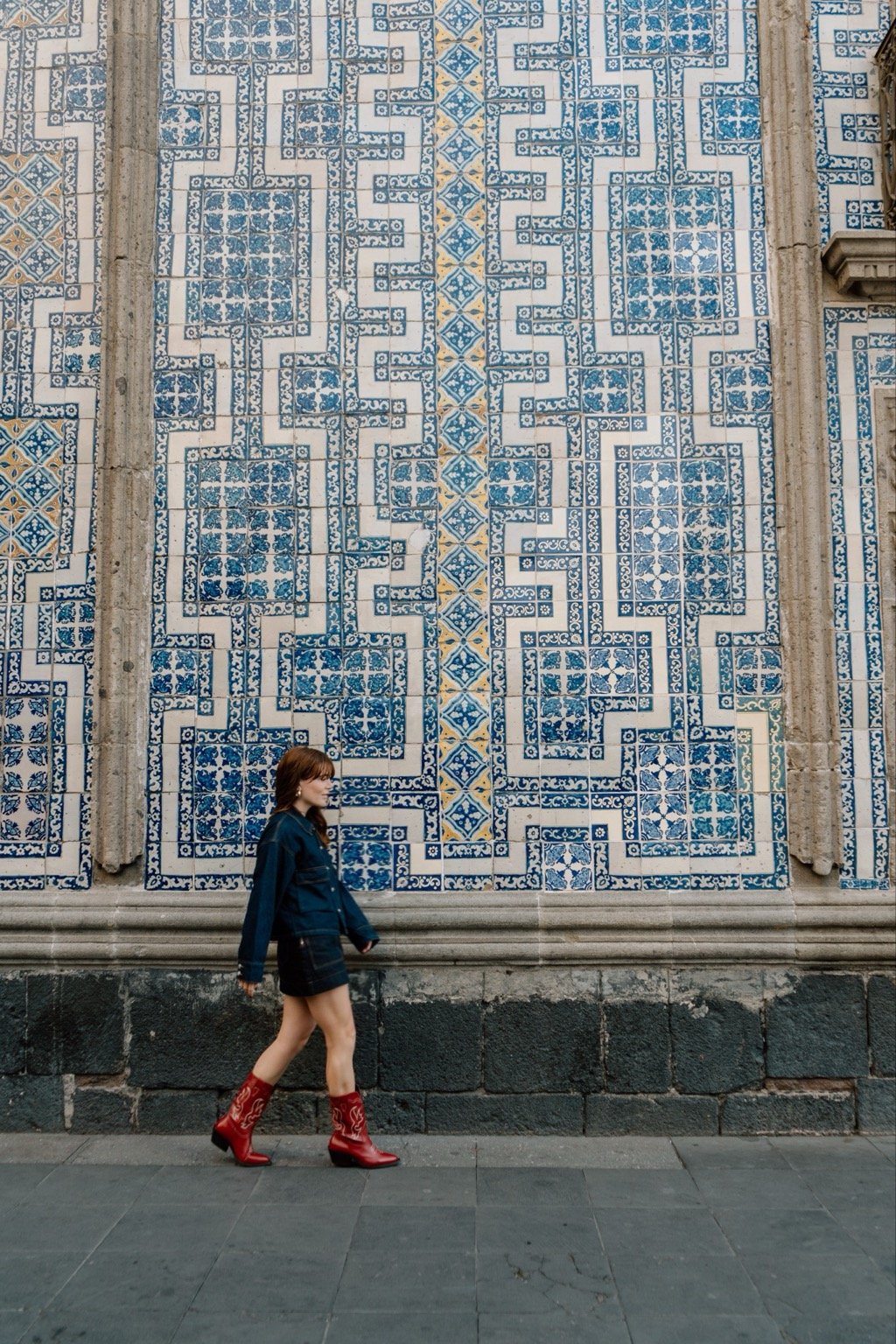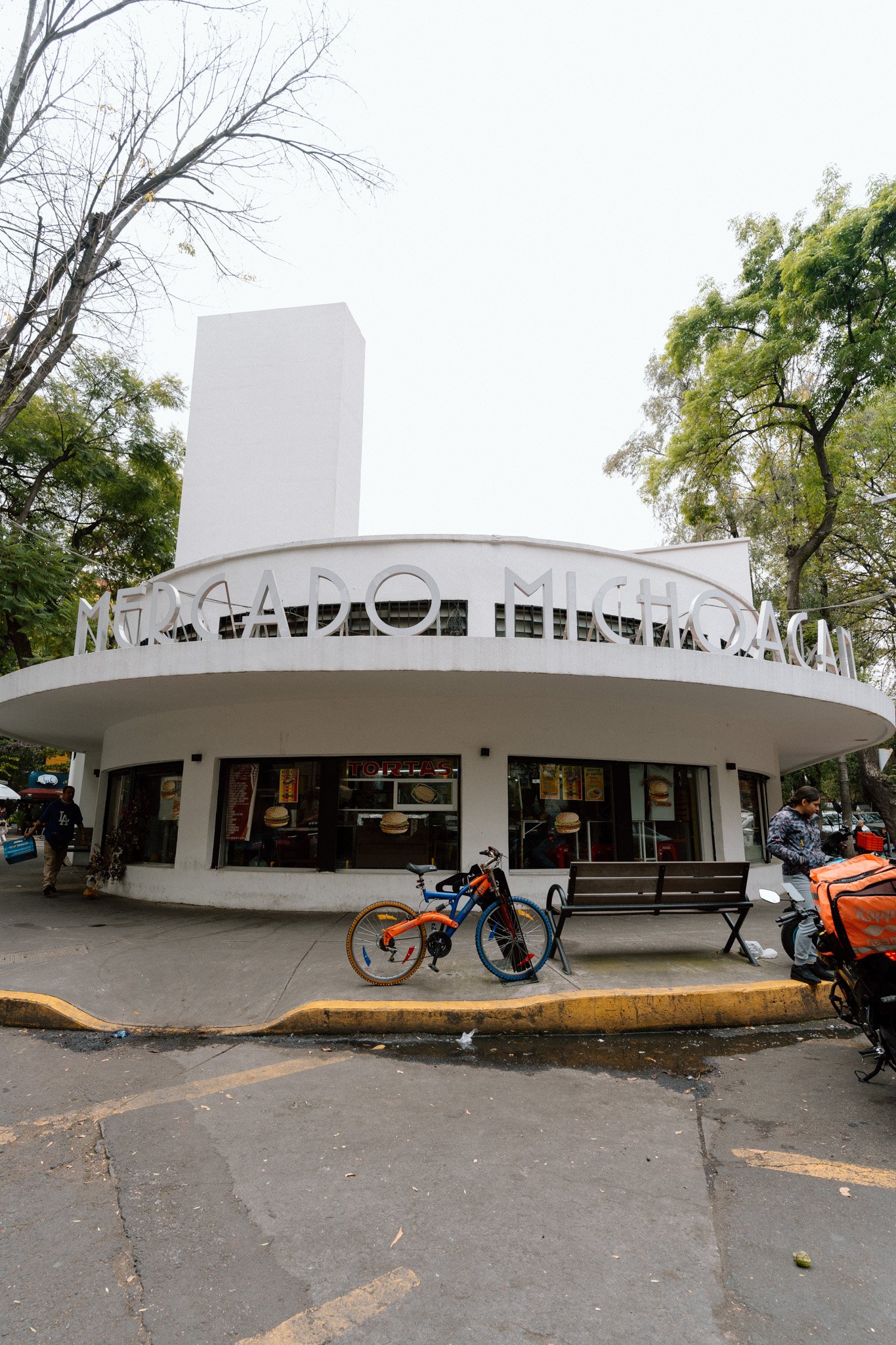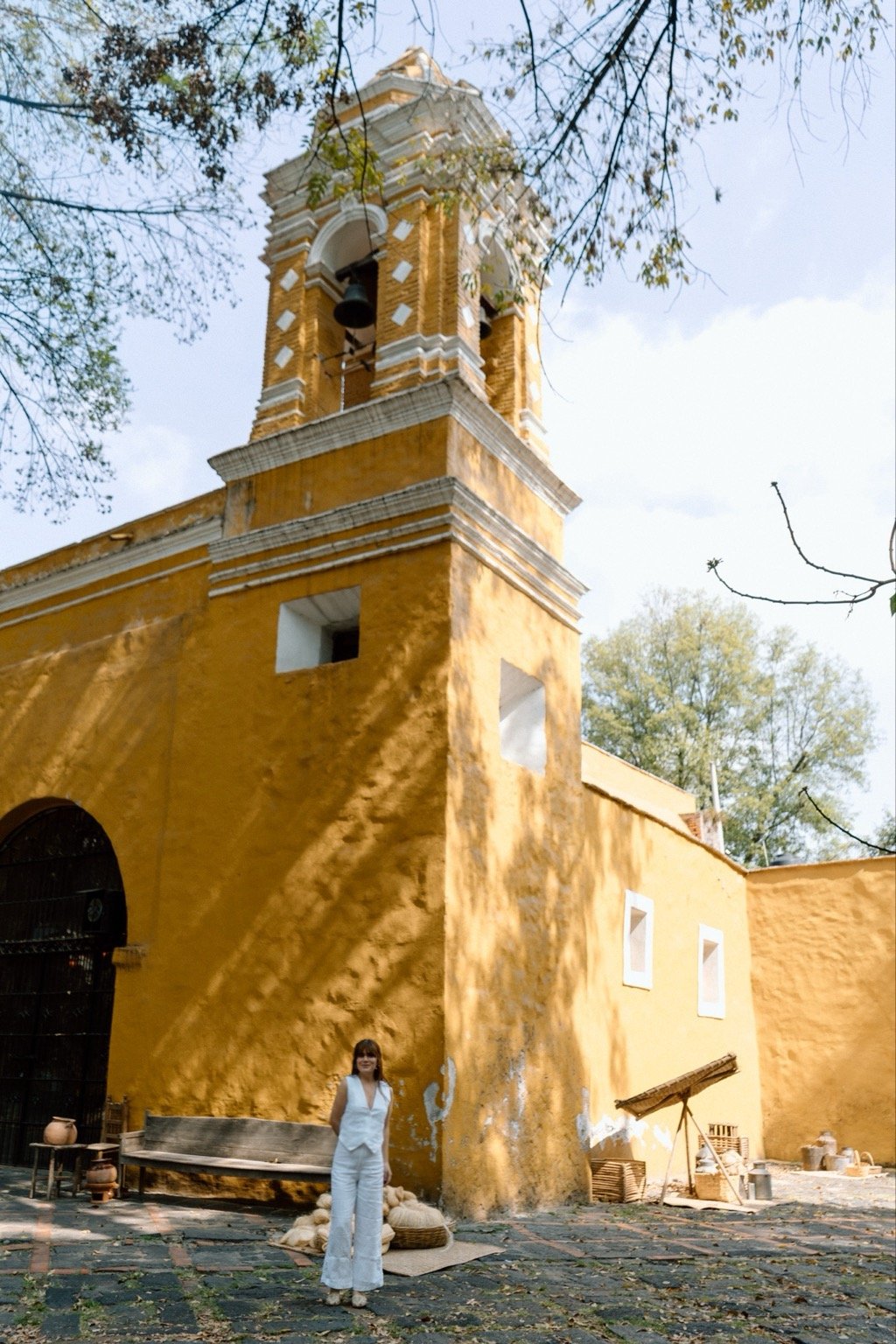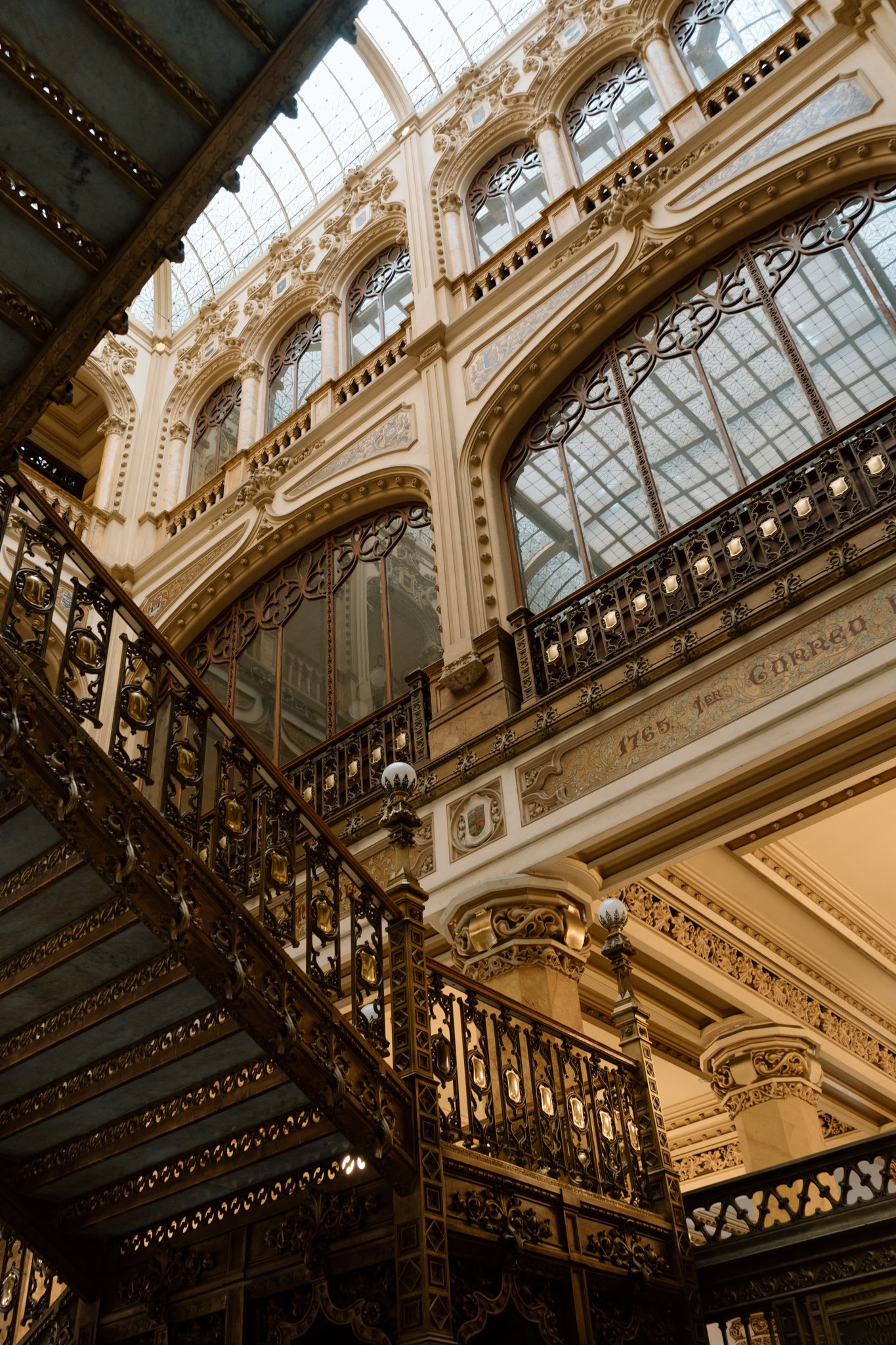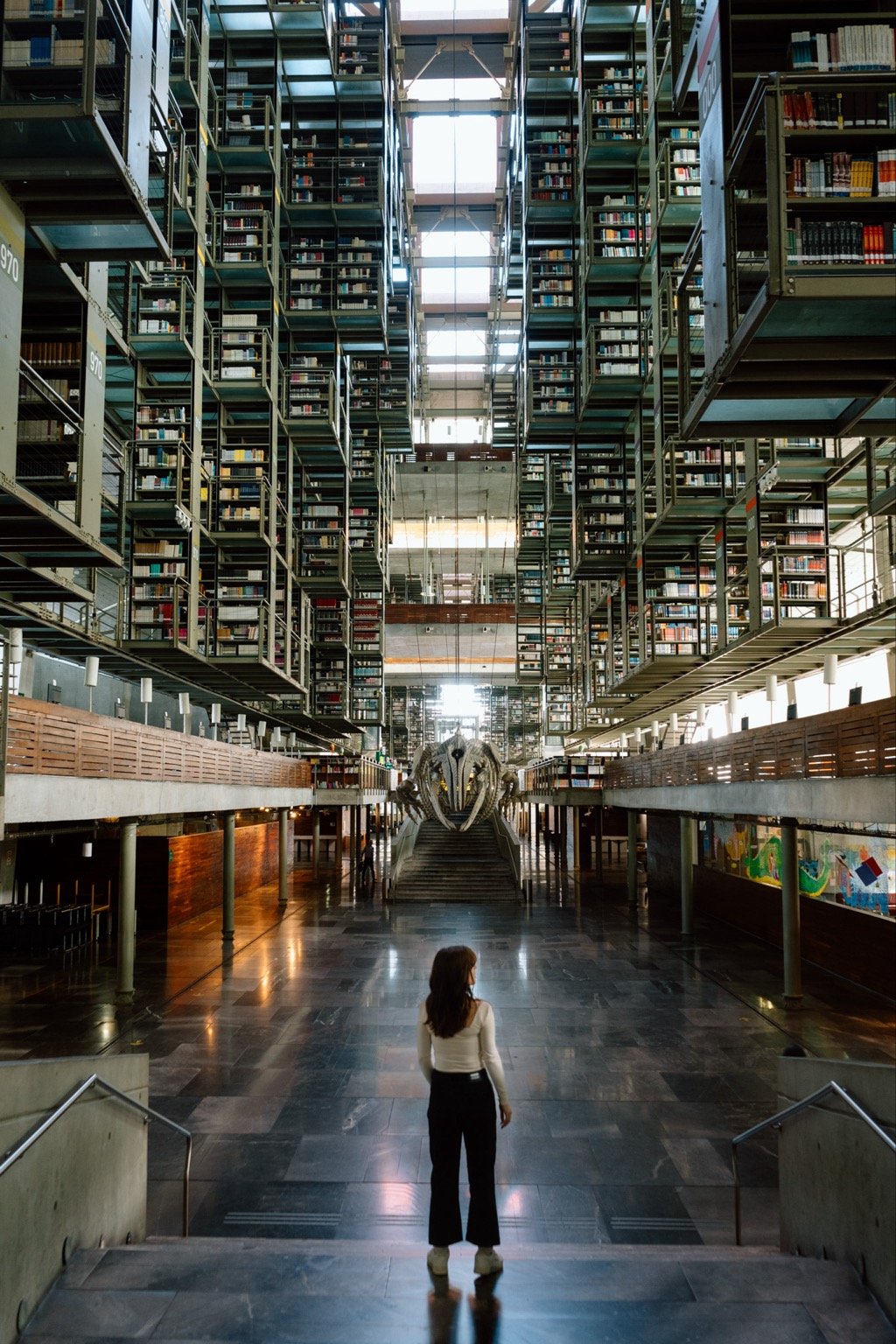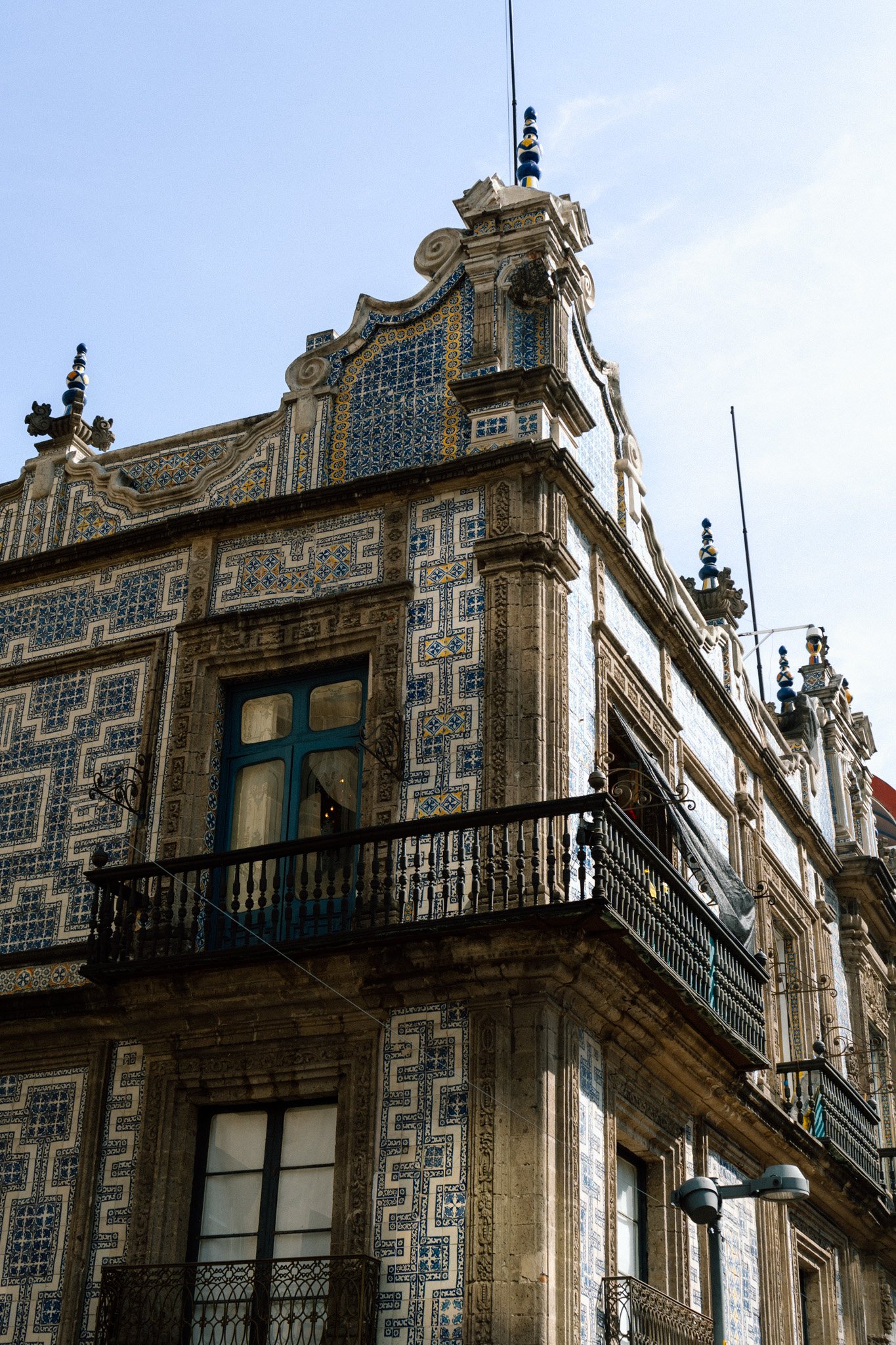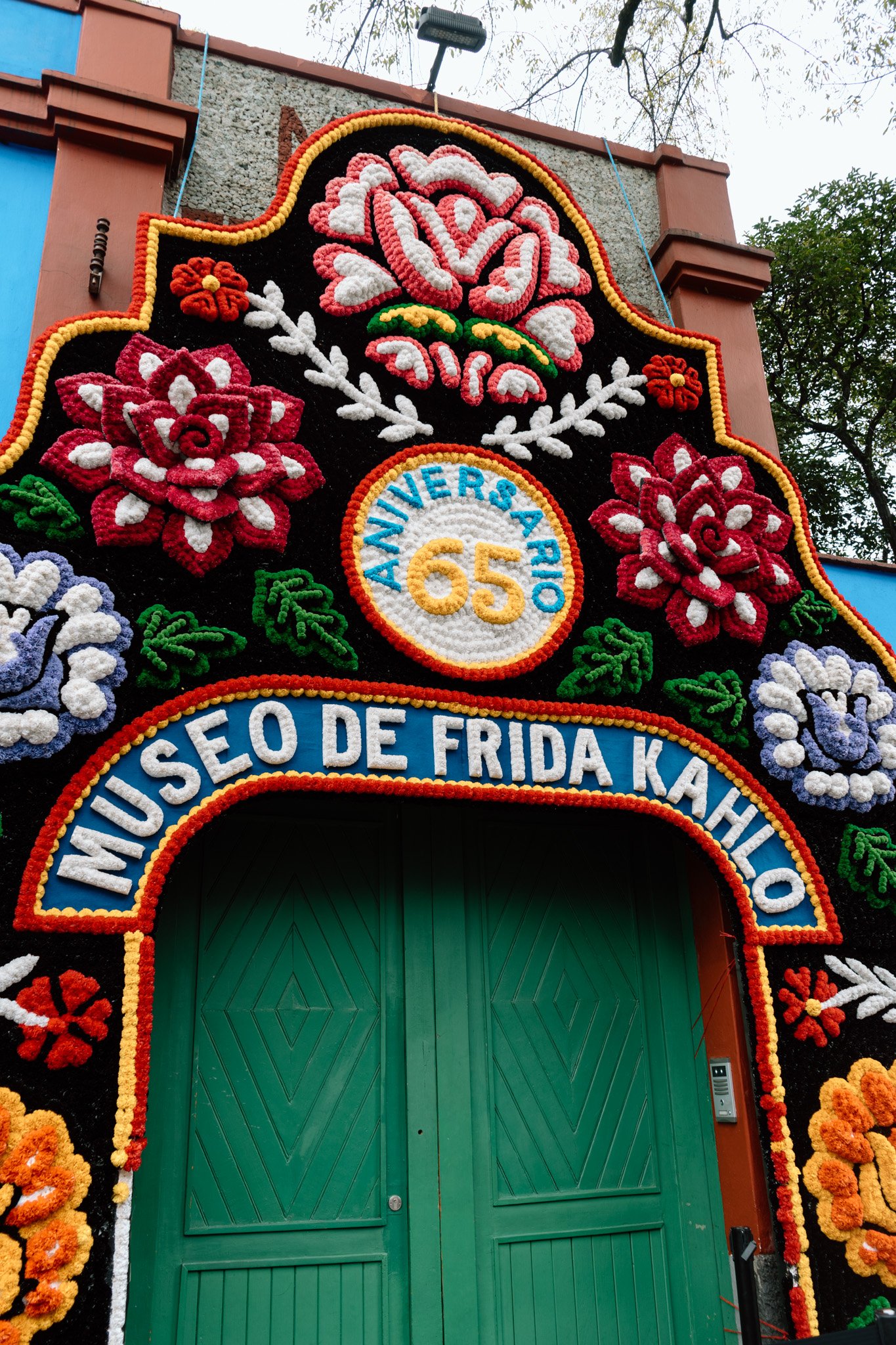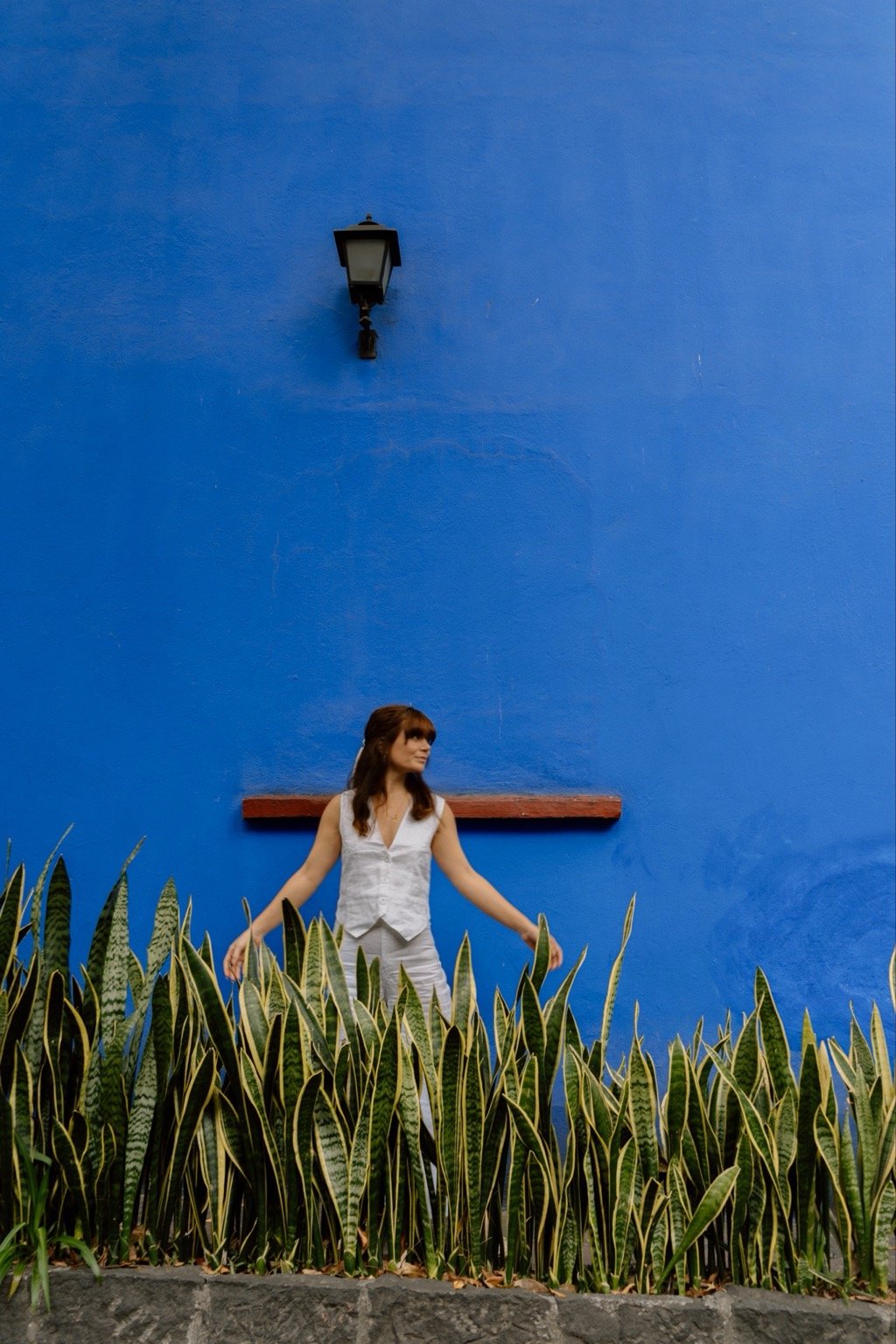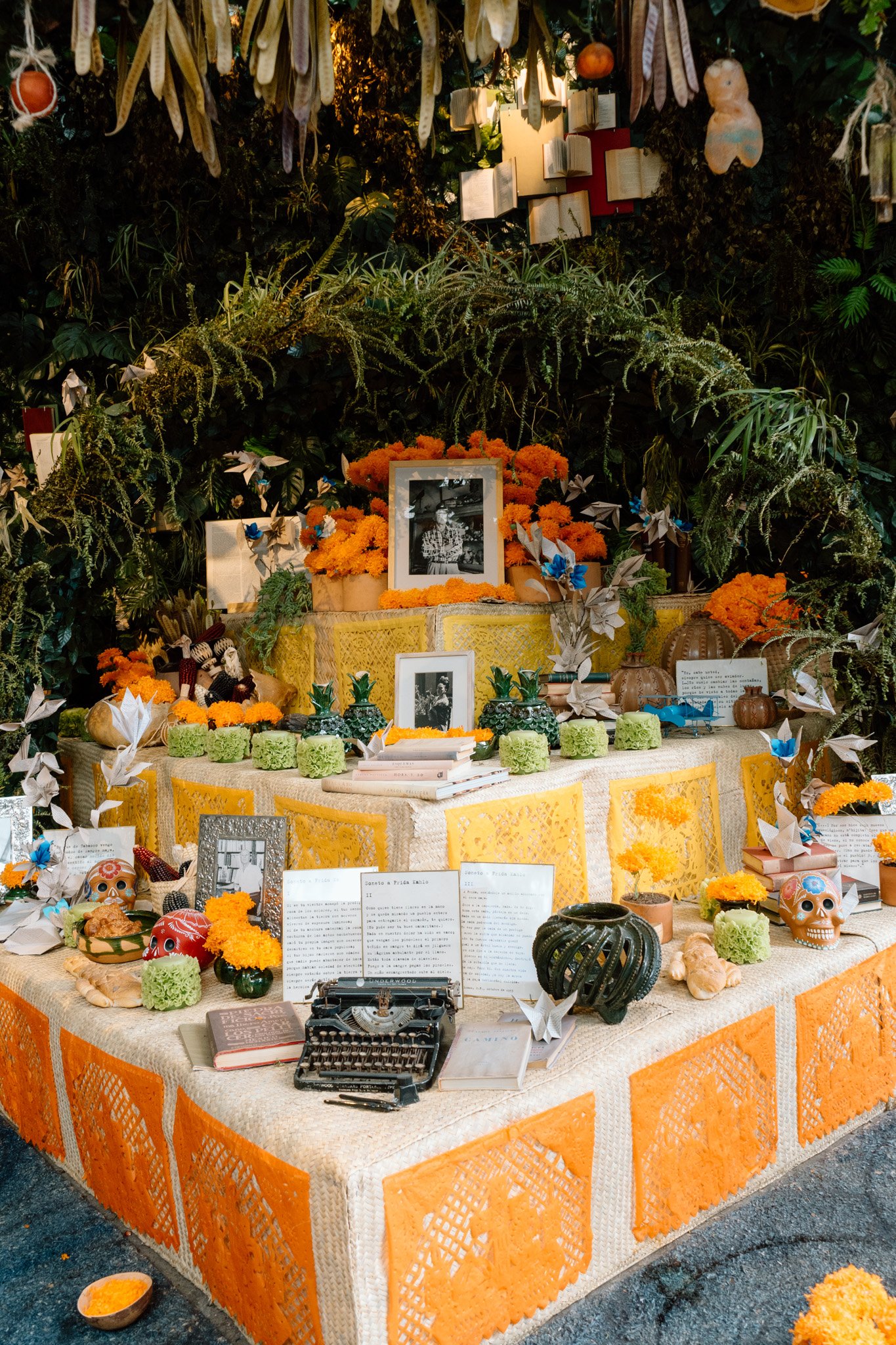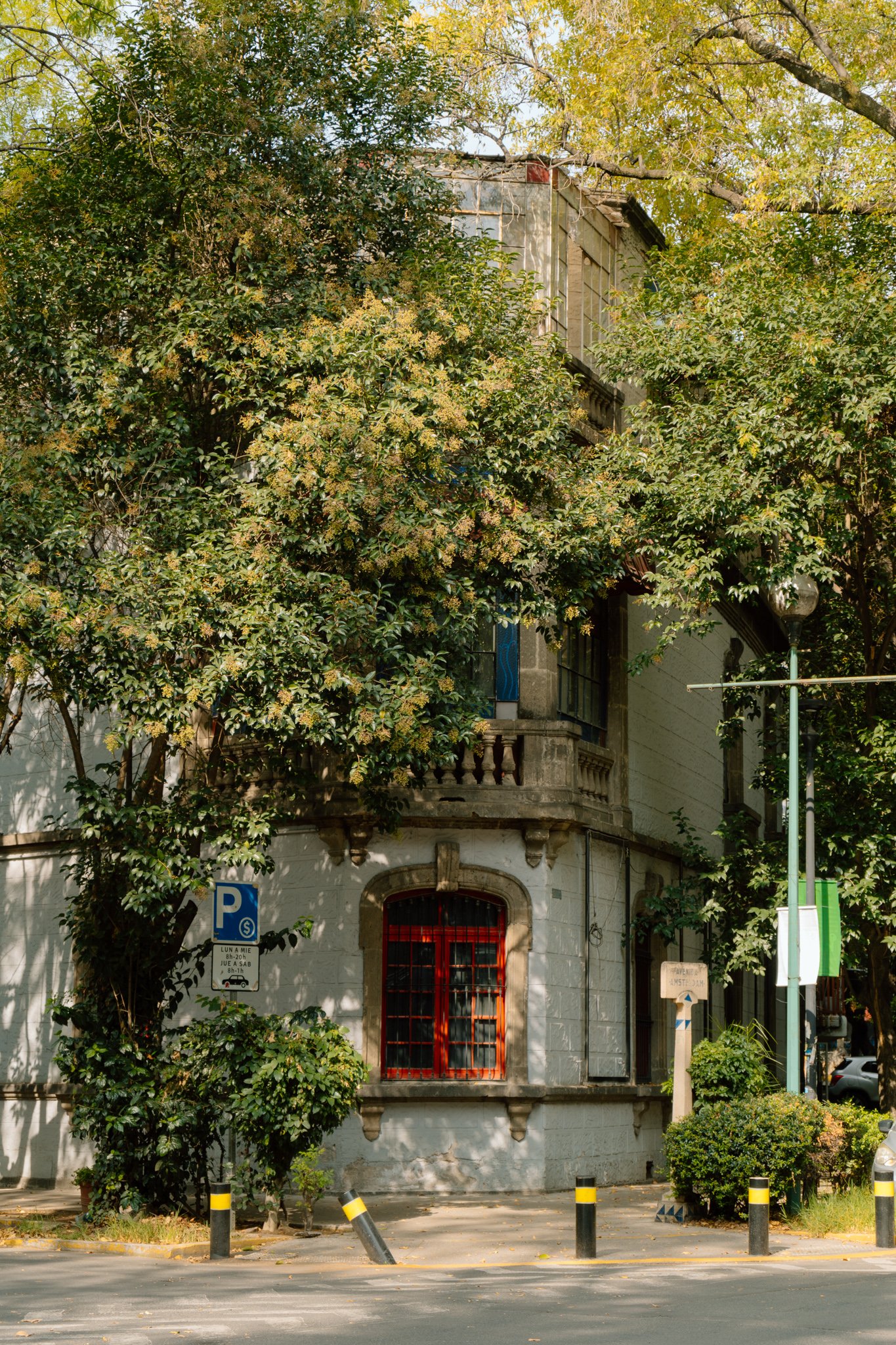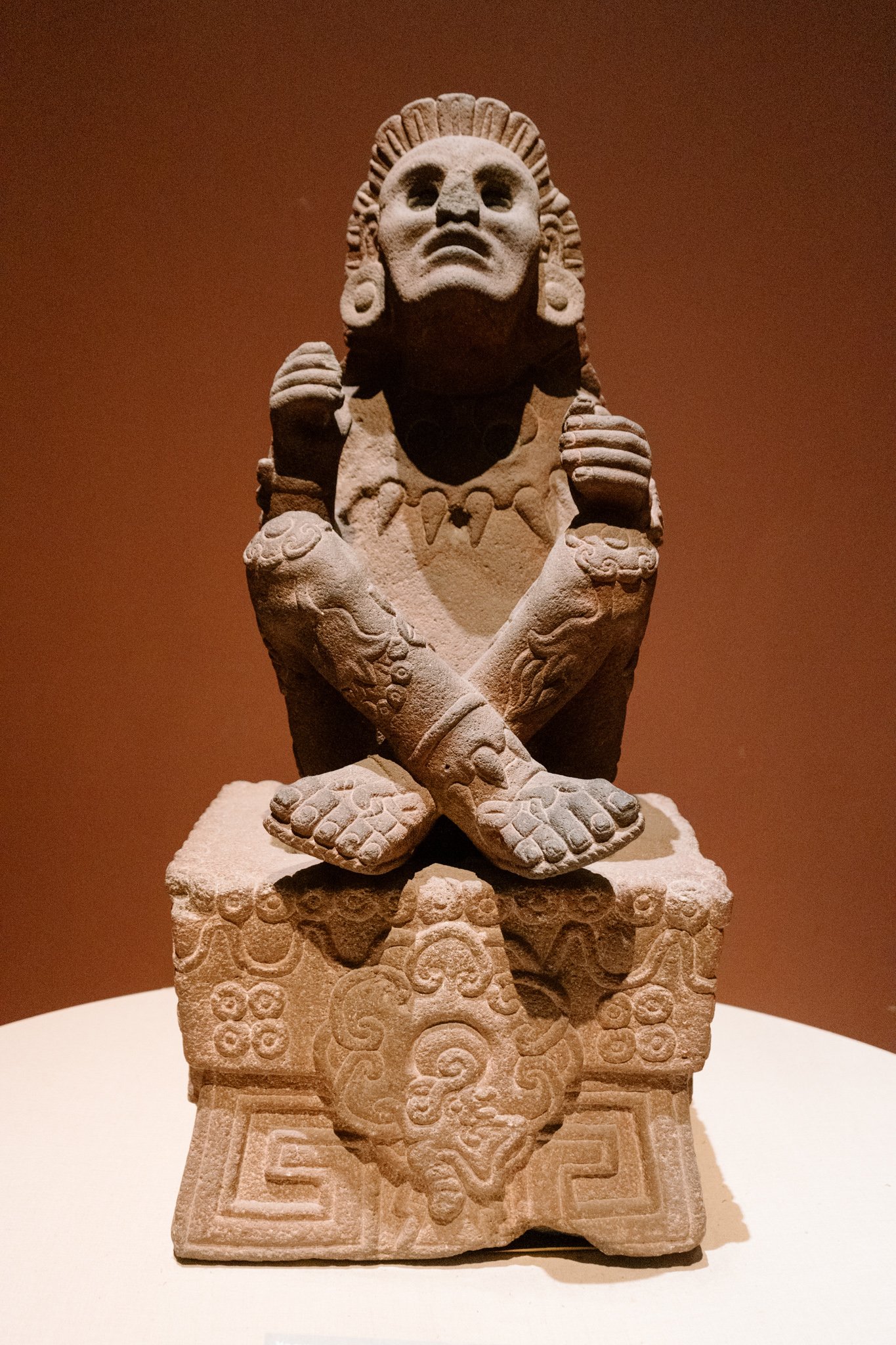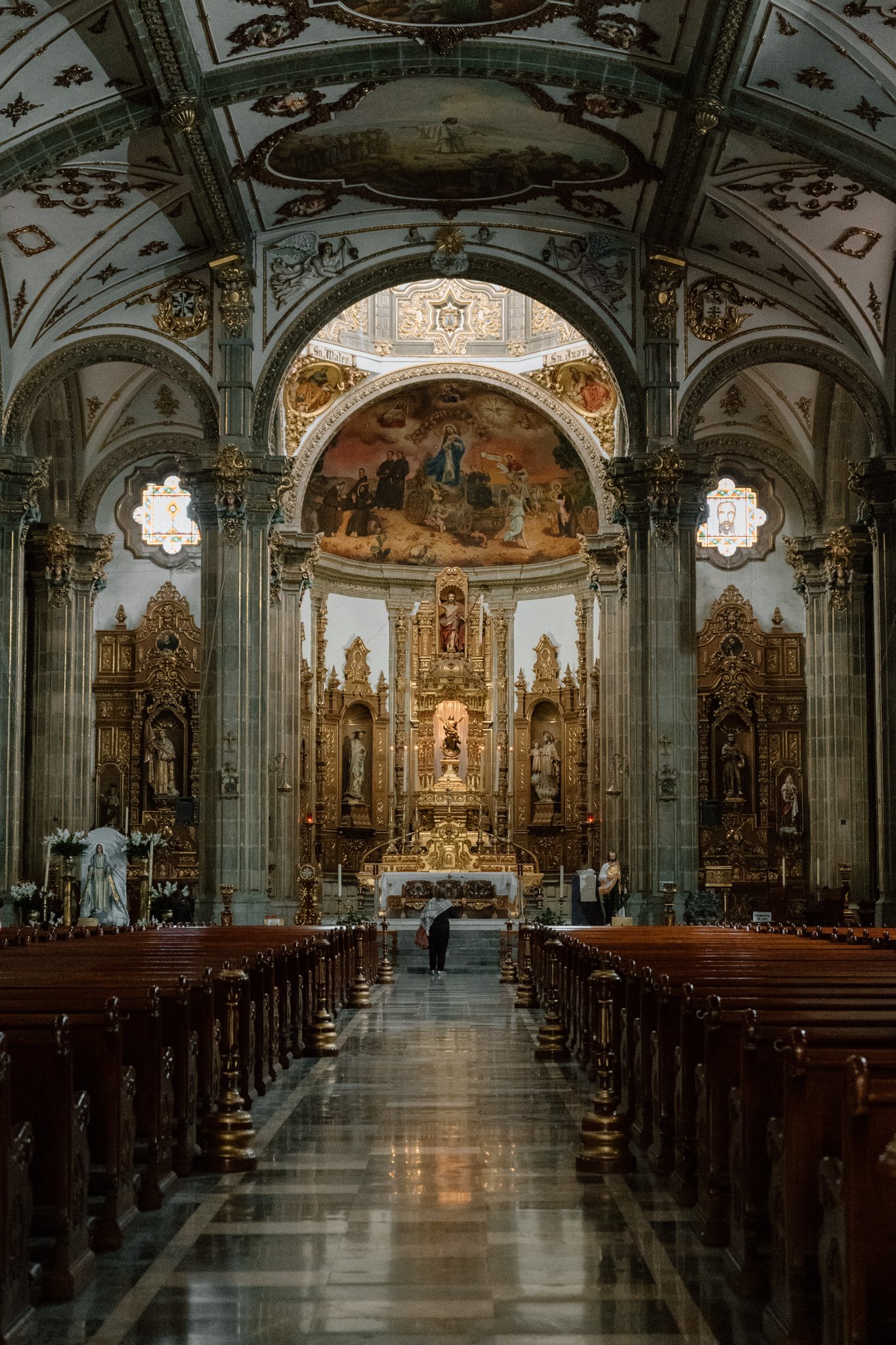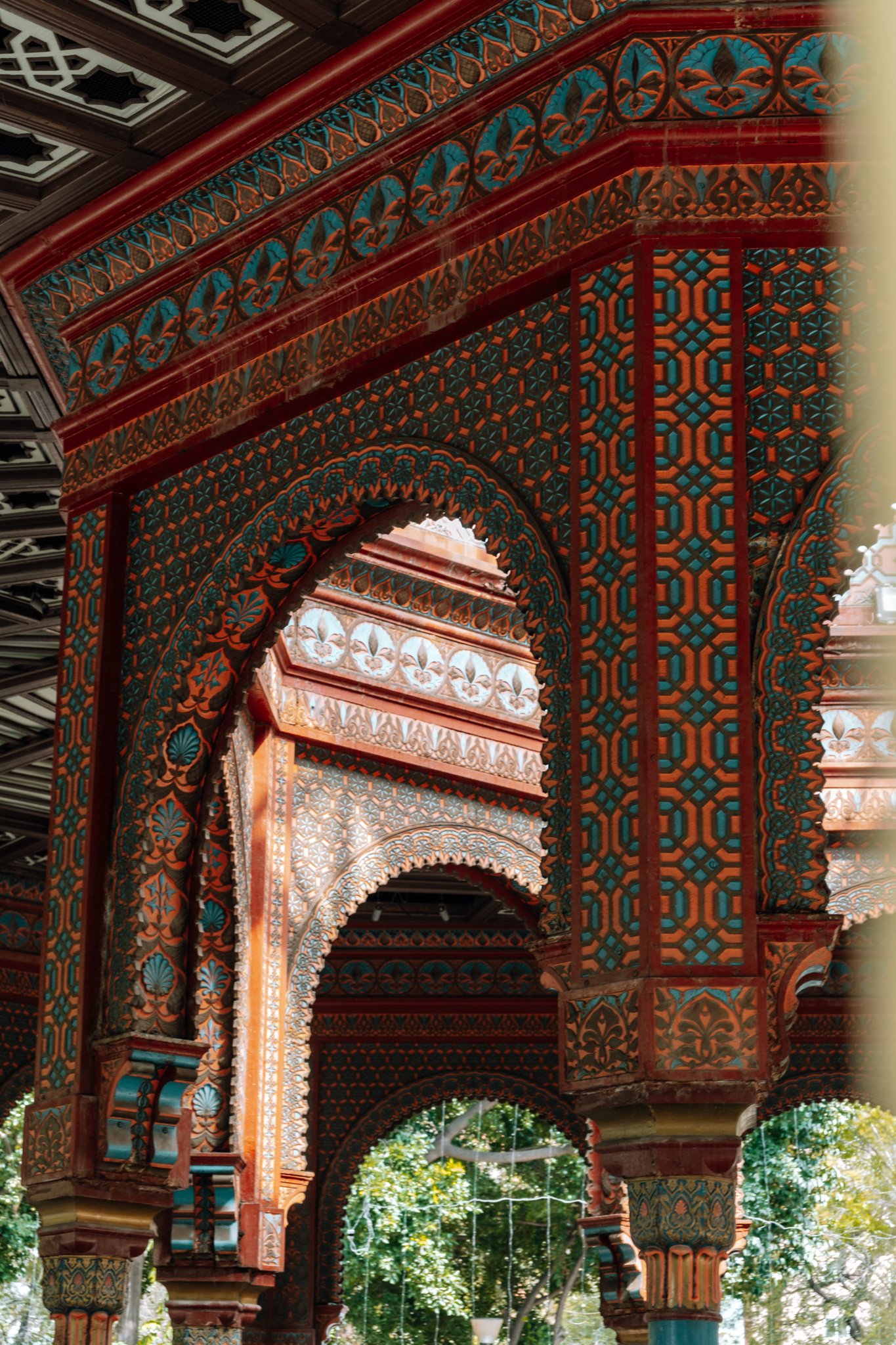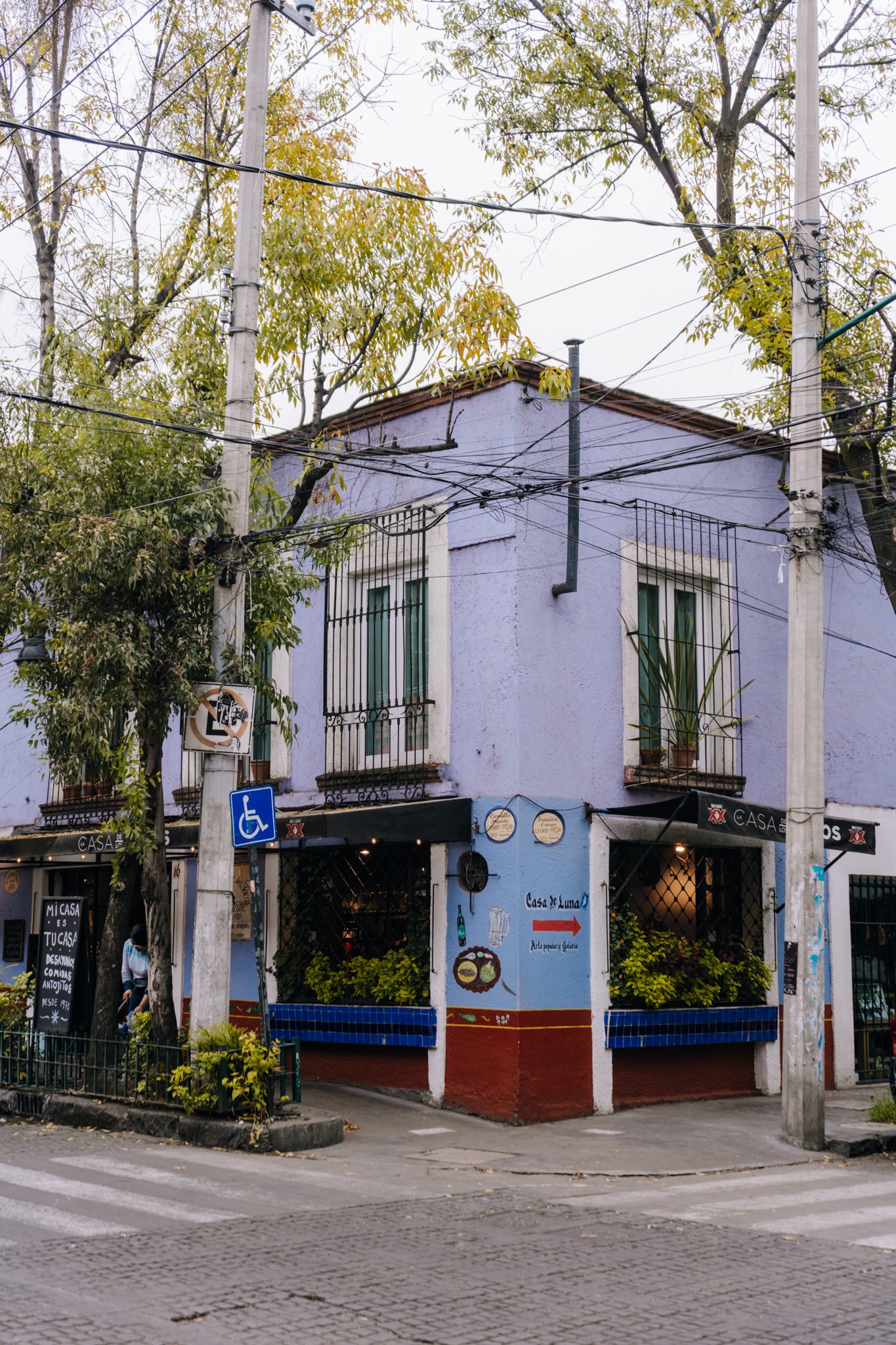The Ultimate Itinerary for 5 Days in México City: Food, Culture, + Art (Updated for 2025)
If you’re a first-time visitor to México City, you’ve found the ultimate 5-day itinerary. This CDMX itinerary highlights can’t miss cultural activities and mouthwatering foodie finds, as well as detailing all must-know information for travelers.
México City is a capital of contrasts. Street food stalls and award-winning restaurants. Luxury designer stores and vintage shops. European architecture and Aztec-era ruins. It’s a place where modernity meets heritage. And, while the city is ever-changing, there is one thing that remains true: México City steals hearts. To help you discover the magic of México City (also referred to as CDMX), I’ve crafted the ultimate 5-day itinerary filled with food, art, and cultural highlights.
I love México. There’s a reason I come back time and time again, exploring new parts of this expansive country. I love it so much, in fact, that Luke and I have discussed moving here multiple times. The country is overflowing with rich history, diverse landscapes, some of the best food you’ll find anywhere in the world. How special to have a capital city that so beautifully encapsulates it all? Whether you enjoy urban escapes or not, México City will have you swooning over its green spaces, its museums, and its culinary masterpieces.
This 5-day itinerary for México City will arm you with everything you need to know to spend a perfect five days in this mega city. Filled with foodie finds and cultural highlights, I promise if you follow my recommendations, you’ll fall deeply in love with México’s buzzing capital.
where to stay in Mexico City (CDMX) ↴
Mexico City is massive, with many of its main attractions spread across the city. Because of this, it’s important to do a bit of research and find a well-located area to make your trip as manageable as possible.
Best areas to stay in CDMX
Roma | Roma is where Luke and I spent two weeks in a beautiful industrial apartment. It was the perfect base for us, near some of my favorite cafés, eateries, and cultural sites. We also felt incredibly safe, though this was true of our experience everywhere in Mexico City.
Condesa | Condesa neighbors Roma and Chapultepec, which means it’s in a prime location. Like Roma, Condesa has no shortage of aesthetic coffee shops, mouthwatering street food, and upscale sit-down restaurants. We spent four nights in Condesa and loved the walkability.
Polanco | Travelers looking for luxury accommodation may like staying in Polanco. This affluent area of CDMX is filled with modern art museums, upscale dining, and designer shopping centers. Hotels in this area are much more expensive than in other neighborhoods, but staying here means being near green spaces and Chapultepec. Polanco isn’t my first choice, but it’s a good, quiet option.
Here are some of the best hotels in CDMX.
budget stays
Hotel Benidorm | A no-frills option in the heart of the city, Hotel Benidorm offers comfortable rooms and a perfect location for budget-conscious travelers looking to explore Mexico City.
Hotel Block Suites | With a modern design and spacious rooms, Hotel Block Suites offers a contemporary stay just a short distance from the bustling areas of Polanco and Chapultepec.
mid-range stays
ULIV | A sleek and stylish hotel with a focus on sustainability, ULIV combines eco-friendly design with comfortable amenities, making it a chic choice for eco-conscious travelers.
Condesa DF | A trendy and upscale boutique hotel in the vibrant Condesa neighborhood, Condesa DF blends modern elegance with bohemian charm, offering a laid-back yet luxurious experience.
Luxury stays
Zocalo Central Hotel | Located right on the Zócalo Plaza, this historic hotel offers stunning views of the city’s main square, making it a perfect choice for those looking to immerse themselves in Mexico City’s culture.
La Valise Hotel | A beautifully unique boutique hotel, La Valise combines artistic decor, intimate rooms, and impeccable service, offering a one-of-a-kind stay in the heart of Roma Norte.
We love using Booking.com to book the best places to stay around the world.
cost of Travel in México City ↴
Generally speaking, México City is very affordable. However, with the influx of foreign digital nomads and remote workers, gentrification has led to an increased cost of living. Street food can cost as little as USD $0.50 per taco, but upscale sit-down restaurants in trendy areas, like Roma and Condesa, can set you back USD $10-25 per person. It can cost more if you drink alcohol, particularly at the many speakeasies and trendy bars around the city. Still, it’s cheaper than UK or US prices. Accommodation can be as low as USD $30 per night for a basic guesthouse or can cost $200+ per night for a luxury hotel in Polanco. Like anything, it really depends on your travel preferences and priorities.
how to get to Mexico City ↴
The most common and convenient way for international travelers to get to México City is to book a flight directly to Mexico City International Airport (Aeropuerto Internacional Benito Juárez). Most major airlines operate direct flights to the capital, including Aeromexico, American, United, Delta, Lufthansa, Air Canada, KLM, British Airways, and Iberia. For the best flight deals, check Google Flights or Skyscanner.
From the airport, travelers can take Metrobus line 4 into the city center. The buses on this line operate from 4.30 AM to midnight every day and take approximately 30 minutes to get to Centro. A single one-way ticket costs 30 pesos. Ubers are an affordable and readily available alternative to the bus. I opted for an Uber as I arrived late in the evening and was dropped off directly outside my hotel.
how to get around Mexico City ↴
How you choose to get around Mexico City during your stay depends entirely on the time and money you have. Using the city’s metro and bus public transportation options is a very affordable way to get around. However, the city is relatively spread out, so those who are short on time should consider using Uber. If you plan on following this 5-day itinerary for CDMX, I recommend using Uber to save yourself valuable time.
Metro
Mexico City’s metro system can be chaotic at the best of times, however, it’s remarkably cheap and relatively efficient. Rides only cost 5 pesos per journey. You’ll need to purchase a travel card from the ticket counter. The metro’s routes show up on Google Maps, so navigating your way around is a breeze. I recommend using the women's and children’s carriage at night and keeping a tight grip on your belongings.
Buses
Luke and I tried exactly two buses in Mexico City before we decided to cut our losses and grab an Uber. If you speak Spanish above a remedial level, you should be fine, but my Spanish vocabulary was just not cutting it. You’ll need to pay for each journey in cash, and I’ve read that you shouldn’t expect change.
Uber
Uber is the easiest way to get around the city, and it’s much more affordable than in the US and UK. Uber is a safe way to get around the city at night. Most of my Uber rides from Roma Norte set me back between USD $5-12, but we walked a lot and only took rides to further away attractions (like Coyoacán, etc.). Be warned though: Mexico City traffic is intense! In some instances, you might be able to walk to your intended destination before your Uber makes it there.
travel tips for Mexico City ↴
SIM cards in Mexico City
If you’re staying in Mexico City for a couple of days, a SIM card probably isn’t necessary. There is free WiFi in pockets of the city, and I got by just fine without one. However, Luke grabbed a Telcel SIM card at a 7-Eleven convenience store for 150 pesos. This got us unlimited social media and WhatsApp for our three weeks in the city, which allowed us to call Ubers at night and travel to areas with restricted WiFi access.
On a previous trip, I purchased a similar prepaid SIM from an OXXO convenience store called the OXXOcel. Again, I had unlimited social media and WhatsApp.
Tipping Culture
I’ve found that tipping at sit-down restaurants is expected throughout Mexico City. When I paid using my contactless card, the machine almost always asked if I wanted to add a 10% (or more) tip. Keep this in mind for your budget! If it makes you feel better, know that the service everywhere I’ve eaten in Mexico City is 10/10 fantastic.
Museum closures + bookings
For planning purposes, you should know that many of the museums throughout México City are closed on Mondays. Many of its most famous museums are ticketed and book out weeks in advance. If you have your heart set on seeing Frida Kahlo’s house, for example, booking your visit is the best way to guarantee a visit. This itinerary has been created to include a lot of the capital’s best and most interesting museums, but was also built to be flexible. Move your museum visits around as needed.
is Mexico City (CDMX) safe ↴
This was the most commonly asked question sent in by my Instagram followers during my Mexico Q+A! I can honestly say, as a CIS straight white woman, I felt safer in CDMX than I do in most of the US. I took precautions throughout my few weeks in Mexico City, the same as I would in any major metropolitan area.
I was traveling with my husband and it was not my first time in Mexico, so my experience may be different than solo female travelers or first-time visitors to Mexico. Keep your wits about you and utilize Uber at night if you feel uncomfortable.
5-day itinerary for Mexico City ↴
Because México City is so vast, I’ve split this curated 5-day itinerary by area. Exploring the city this way will eliminate unwanted time on a bus or in an Uber.
Day 1| Centro
Day 2| Teotihuacan
Day 3| Coyoacan, San Angel, + Xochimilco
Day 4| Chapultepec + Polanco
Day 5| Roma + Condesa
Day 1: Centro
What better way to start your adventures in Mexico City than with an introduction to the city center? Day 1 of this itinerary will focus on Centro (also referred to as Centro Historico). As its name suggests, it’s the historic center of México City. It’s a great place to begin exploring as it perfectly showcases local food, history, and Méxican culture.
Start with traditional breakfast at Café de Tacbua or grab brunch at Farmacia de Internacional. If you’re not interested in a full meal early in the day, consider grabbing coffee and pastries from ACRE Panaderia.
Once you’re fueled for your adventures, walk through Barrio de Chino, Mexico City’s Chinatown. While not the most dazzling Chinatown I’ve visited, it’s worth passing through on your way to Palacio de Bellas Artes. This palace, inaugurated in 1934, seamlessly combines Neoclassical and Art Deco styles, creating a visually stunning city centerpiece. Its construction began in 1904 under the guidance of renowned architects Adamo Boari and Federico Mariscal. Today, the palace serves as a cultural hub, hosting an array of artistic performances and gallery exhibitions. The interior walls house murals by esteemed Mexican artists like Diego Rivera and Rufino Tamayo.
For the best, unobstructed views of Palacio de Bellas Artes, head across the street to the Sears department store and up to the 8th-floor café. You’ll need to purchase food or drink here. The menu prices weren’t super inflated, but the food was nothing special. My advice? Grab a horchata and skip eating— you can get better food for less elsewhere in Centro.
Palacio de Bellas Artes is surrounded by cultural landmarks travelers can’t miss. I recommend dropping by México City’s ornate post office (Palacio Postal), the House of Tiles, and the México City Metropolitan Cathedral. México City also features the largest plaza in Latin America, which sits adjacent to Aztec ruins. Unfortunately, Spanish colonizers built on top of these ruins. This is a very touristy-heavy area, so be mindful of your belongings while you wander around. We never had any trouble or felt unsafe. However, as is true of most places, the city center sees a lot of petty theft.
All the sightseeing will work up an appetite! For lunch, try some of the city’s best basket tacos. I recommend Tacos de Canasta Los Especiales, a no-frills taqueria (taco eatery). ”Basket tacos” get their name because they are cooked at home and carried in baskets (or plastic bins) to the streets to be sold.
Tacos de Canasta Los Especiales was once a street food stall, but it became such a popular spot that they eventually opened a permanent location in the Centro neighborhood. While they are wildly successful, the price remains low. The most traditional taco filling here is chicharron (pork), but they also have refried beans and mashed potato fillings. Top your tacos with free guacamole, and either sit at a countertop stool or stand shoulder-to-shoulder with other eager patrons.
Los Cocuyos is also known for its outstanding tacos, but the vegetarian options were non-existent when we visited. Luke (who is flexitarian when traveling) did say they were among the best tacos he had throughout our entire trip.
I’ve always found that shopping helps with digestion, so your next stop will be La Ciudadela! Filled with vibrant local handicrafts, this market is ideal for picking up souvenirs.
There is only one way to finish your first day in México City: Lucha Libre. Lucha Libre is traditional Méxican wrestling that is theatrical and story-driven. Even if you aren’t a wrestling fan, I promise you will be entertained by the acrobatic skills and drama. There are three arenas in México City. Luke and I went to a show at Arena México, the largest arena in the city. This arena hosts shows every Tuesday, Friday, and Sunday. The Sunday shows are more family-friendly matinees, though the Tuesday night show we went to was very PG-rated. We booked our tickets ahead of time online, but you can purchase tickets at the door.
Book | Lucha Libre tickets (book directly on Ticketmaster)
Day 2: Teotihuacan
No trip to México City would be complete without a day trip to the incredible Teotihuacan. Built in 200 AD, Teotihuacan is a sprawling archaeological site located approximately 25 miles from Mexico City. Teotihuacan was once the sixth-largest city in the world, and its scale is easily observed upon arrival. The ancient city’s central feature is an enormous stone structure known as the Pyramid of the Sun. I was shocked by the size of every ruin on the grounds. There are a number of highly rated Teotihuacan tours that include transportation to and from Mexico City. Many of them include breakfast as well.
The best way to see Teotihuacan is, without a doubt, from above. A sunrise hot air balloon over Teotihuacan is a true bucket list experience, and I cannot recommend it highly enough. It was the best thing we did on our Mexico City trip, and it was worth every penny spent.
Whether you are visiting on a tour or without a guide, my best advice is to get to Teotihuacan as early as possible. It gets unbearably hot and crowded in the afternoon. Most tours return to Mexico City just after 1 PM, giving you another half day to explore. Fill your free afternoon with a street food tour or with souvenir shopping.
Book | Teotihuacan tour
Day 3: Coyoacán, San Angel, + Xochimilco
Your third day in México City will be spent in the artsy southern neighborhoods, starting in Coyoacán! Coyoacán is the oldest neighborhood in México City. The Tepanec people founded Coyoacán in the 12th Century. The easiest way to get to Coyoacán is via Uber. I booked an Uber to Coyoacán’s beloved Café Avellaneda for breakfast. Weekend visitors may want to try the famous Saturday brunch at Meson Antigua Santa Catarina. The restaurant is filled with colorful murals and has alfresco seating for those who prefer a bit of sunshine.
After eating, I walked from the café to stand in the ticketed queue at Casa Azul, the former residence of Frida Kahlo and Diego Rivera. Casa Azul, frequently called Frida’s House or the Frida Kahlo Museum, is arguably the main reason many people journey to Coyoacán. It’s the most popular thing to do in Coyoacán, and thus tickets to visit sell out regularly weeks in advance. The cheapest way to visit Frida’s House is to buy your tickets in advance online and have them sent to your email address. Casa Azul gives insight into the everyday life of the renowned artists who called it home.
I wished there had been more of Frida’s art throughout Casa Azul, but luckily the next museum on this itinerary was filled with it. Museo Casa Estudio Diego Rivera y Frida Kahlo (Diego Rivera and Frida Kahlo’s House-Studio Museum) was more exciting, in my opinion, than Casa Azul. This museum includes three of the artists’ home studios and their photography lab.
If you cannot get a ticket to Casa Azul, or perhaps art just doesn’t tickle your fancy, consider substituting the above with any of the following things to do in Coyoacán:
Museo Nacional de Culturas Populares | A museum dedicated to México’s Indigenous cultural diversity.
Parque Masayoshi Ôhira (Japanese Park) | A small, off-the-beaten-path park that will transport you to the Land of the Rising Sun! Photographers love the Japanese cherry blossoms that fill the sky with pops of pink. Don’t miss the Asian-style bridge and the iconic red arch.
The National Autonomous University of Mexico (UNAM) | Listed as a UNESCO World Heritage Site in 2007, this campus is comprised of buildings conceptualized and constructed by more than 60 architects and artists. Juan O’Gorman’s iconic painting on the Central Library UNAM is said to be the largest mural ever made.
Once you’ve had your fill of artwork, grab a coffee at Café El Jarocho before lunch. Café El Jarocho is a Coyoacán institution dating back to 1953. At first glance, the café might seem old school, but it’s home to one of the first industrial coffee machines in México. Café de Olla is their signature drink, which combines coffee with cinnamon.
For lunch, you’re spoiled for choice! Mercado Coyoacán, the main market, is overflowing with food vendors selling al pastor tacos, cheesy quesadillas, and crunchy tostadas. I loved the elote (grilled corn covered in butter and spices) I bought from the market. I even managed to get it made without mayonnaise, though explaining my special order proved quite tricky. There is also the unmissable San Angel Inn, conveniently located next door to Casa Azul. The San Angel Inn is housed inside a former monastery with a beautiful courtyard.
There are three can’t-miss churches in Coyoacán: Iglesia de San Juan Bautista Church, Capilla de Santa Catarina Church, and Iglesia de la Inmaculada Concepción (also known as La Conchita Church). You’ll also want to stop by Mercado Artesanal Mexicano (Mexican Craft Market ), located just across the street from Parque Centenario (the main square). Here, vendors sell handicrafts that make great souvenirs if you’re in the market.
One thing that truly surprised me during my three weeks in México City was how communism was so interwoven in its art and history. The Leon Trotsky Museum in Coyoacán is the perfect place to learn more about this history and the Bolshevik party leader’s life in México. After being exiled by Joseph Stalin and banished from the USSR, Trotsky and his family were granted political refuge in México in 1936. He lived in Coyoacán for four years, near his friends Frida Kahlo and Diego Rivera, before being murdered by the Spanish Communist, Ramon Mercader. His home has since been turned into a museum filled with his personal effects.
After spending the first half of day 3 exploring the art of Coyoacán, unwind in the evening in Xochimilco. Xochimilco was an independent city during the pre-colonial period. Though Xochimilco is now a part of México City, its identity is entirely its own due to how separate it was from the city for most of its history. Today, it’s best known for its ancient Aztec canals and the gondola-like boats (trajineras) that float along them.
You can hire a trajinera for 600 pesos for an entire boat for one hour from the main public dock. I suggest bringing snacks and drinks to be consumed while you float. Alternatively, there are a number of tours that include a trajinera ride. You can split the 600 pesos with other people if you happen to be traveling with a group! Feeling spendy? Hire a mariachi band to serenade you while you navigate the waterways.
Day 4: Chapultepec + Polanco
Your fourth day of this Mexico City itinerary is centered in Chapultepec and Polanco. I recommend grabbing brunch in Condesa at Lardo and walking from there to Chapultepec Castle. The name “Chapultepec” comes from the Nahuatl language and means “on the hill of a grasshopper.” It is one of only two royal palaces in North America that were inhabited by monarchs.
Stroll through the green park towards the hill where tickets are sold for entry to the castle. Don’t make the same mistake as Luke and I did! if you’re paying by card, you don’t have to wait in line to speak with someone behind the ticket counter. Instead, go straight to the white kiosks inside the ticket building. The tickets sold at the counter are for visitors paying with cash only.
Museo de Arte Moderno (Museum of Modern Art) is a short walk from the Castle The Museo Nacional de Antropologia (National Museum of Anthropology) is fantastic and worth every bit of its admission price. It’s the largest and most visited museum in México. The museum is a complex, occupied by building after building of culturally significant artifacts. We spent the better part of three hours here and could have spent longer if we were able to read the Spanish placards.
Bordering Chapultepec is the most affluent neighborhood in México City— Polanco. Polanco is teeming with museums, art, and designer shopping. Museo Jumex sits among my favorite art museums in México City, and it’s right in the heart of Polanco. It’s free to enter and features four floors of modern art exhibits. Next door is Museo Soumaya. You can’t miss it thanks to its silver tiled exterior. The line to enter gets very long, so you’ll need to either be patient or get here at opening.
If you need coffee fuel while exploring, head to Niddo’s Polanco location for cabinet pastries and coffee. Cucurucho is a Japanese-inspired café with multiple locations throughout CDMX, including Polanco. Their coffee is 10/10, as is their branding.
You’ll find plenty of dining options in Polanco, including the world-class Pujol. Pujol has been repeatedly named one of the best restaurants in the world, and one of the top 10 in Latin America. The seven-course tasting menu costs roughly USD $100, which is significantly more than anywhere else on this itinerary, but foodies won’t want to miss eating the creative take on classic Méxican cuisine. Malix and Quintonil are two other quintessential Polanco restaurants you’ll hear in the zeitgeist.
Grab an evening drink at Limantour, which has been continually voted a top cocktail spot in México City.
Day 5: Roma + Condesa
I could wander the streets of Roma and Condesa endlessly, hopping from café to café and soaking up the tree-lined lanes. And it’s because I love these areas so much that I have saved them for last! Relaxed and in rhythms entirely their own, Roman and Condesa are where this itinerary ends.
Start with brunch at Lalo! (French toast), Lardo (everything), Niddo (famous pancakes), or Panaderia Rosetta (everything, but especially barista coffee). These three options are especially popular with residents, though they are a bit pricier than other bakeries in the area. Trust me when I tell you that no matter where you eat in these areas, it’s almost guaranteed to be phenomenal. I recommend grazing as you can to try as much of the amazing food as possible over your trip.
After breakfast, walk to Parque México, where you’ll often see packs of friendly dogs being walked by their keepers. Avenida Amsterdam is also poluar with walker in Condesa. It used to be a horse racing track, but over time it transformed into a walkway lined with trees and cafés. Continue your walk through Huerto Roma Verde, a community greenspace that frequently hosts art and cultural exhibits.
You can pick up last-minute souvenirs from Mercado Medellin or Condesa’s Friday Market (if you’re visiting on a Friday). I also loved For All Folks, a locally-owned beauty and skincare brand. The products here are made ethically using marigold oil. Goodbye Folk, La Vintage, and Vintage H.O.E are all fantastic vintage clothing stores.
This area is also home to several art galleries and museums. I enjoyed the Object Museum, a small museum dedicated to exploring humans via everyday items. It’s primarily filled with medical instruments and health-focused items from the past, but it’s interesting and good value for money (3 per person). Galleria OMR is another art gallery featuring works by Méxican and international artists.
Lunch on your final day has to be street food. My top picks for vegetarians are Jenni’s Quesadillas or Por Siempre Taqueria. The ribeye queso at El Califa is another option, and it’s legendary amongst carnivores.
I love visiting cinemas around the world, and the arty Cine de Tonala in Roma Sur (Roma South) is no exception. Tickets to shows only cost 50 pesos, and some of the movies are shown in English. The cinema doubles as a restaurant/bar, which is handy if you’re hungry. However, I’d save myself for dinner because there is no shortage of dinner spots in Roma and Condesa.
Some of my favorite dinner spots in these areas for atmosphere include Gracias Madre, Milk Pizzeria, Restaurante Rosetta. Not ready for the night to end? Grab a drink at Gin Gin, one of Condesa’s most famous bars, or enjoy a cocktail from Polpo in Roma. For dessert, I recommend late-night churros at El Morro. There are multiple locations across the city, but the Condesa store overlooks the park and has lovely alfresco seating for people-watching.
where to eat in México City ↴
Taquería El Califa de León | A taco street stand that recently earned Michelin recognition.
Tacos de Canasta Los Especiales | A local family has served these basket tacos in Centro for four decades.
Jenni’s Quesadillas | Jenni’s has earned a reputation for serving some of the best blue corn masa tortillas and filling them with tasty zucchini flowers, mashed potatoes, mushrooms, and cheese.
Gracias Madre Taquería Vegana | The plant-based restaurant’s florescent neon lights and atmospheric patio make it one of those places you want to linger.
Milk Pizzeria | Milk Pizzeria serves remarkable wood-fired pizza in the heart of Roma.
Lalo! | Another less-than-traditional restaurant, Lalo! is one of my favorite spots for brunch. I would highly recommend going for the coffee and stacked berry French toast.
Restaurante Rosetta | Sitting amongst the tree-lined avenues of Roma lies Restaurante Rosetta. As you walk through two heavy mahogany doors, a courtyard opens into a sprinkle of tables topped with vintage china.
Lardo | Lardo is a sister restaurant to her other fabulous Restaurante Rosetta and its twin bakery, Panaderia Rosetta. Similar to Lalo, Lardo is a top pick for brunch, but the lunch and dinner selection here should be on every visitor’s radar.
map ↴
Find everything you need for the ultimate 5-day itinerary for Mexico City on the map below.
